Life with the land
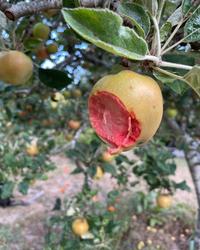
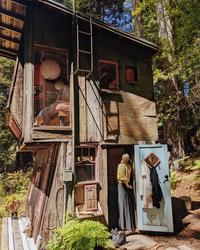
Location
We steward 33 acres of second and third growth redwoods two miles from California’s Mendocino Coast, 10 minutes from Albion, 20 minutes south of the village of Mendocino, and 3 hours north of San Francisco. Living here under the coastal redwoods is very humbling, and SCF is an especially good spot to feel your small place in the big cycle of life on earth.
Grounds
Old logging roads and foot trails criss-cross south facing slopes from sunny meadows, gardens, orchards, communal outdoor kitchen, and dance deck on top, to eight furnished hand-crafted commune cabins each nestled in their own nook of the woods, across a ravine that bisects the land to abandoned off-grid cabins, and finally down to Big Salmon Creek in the valley.
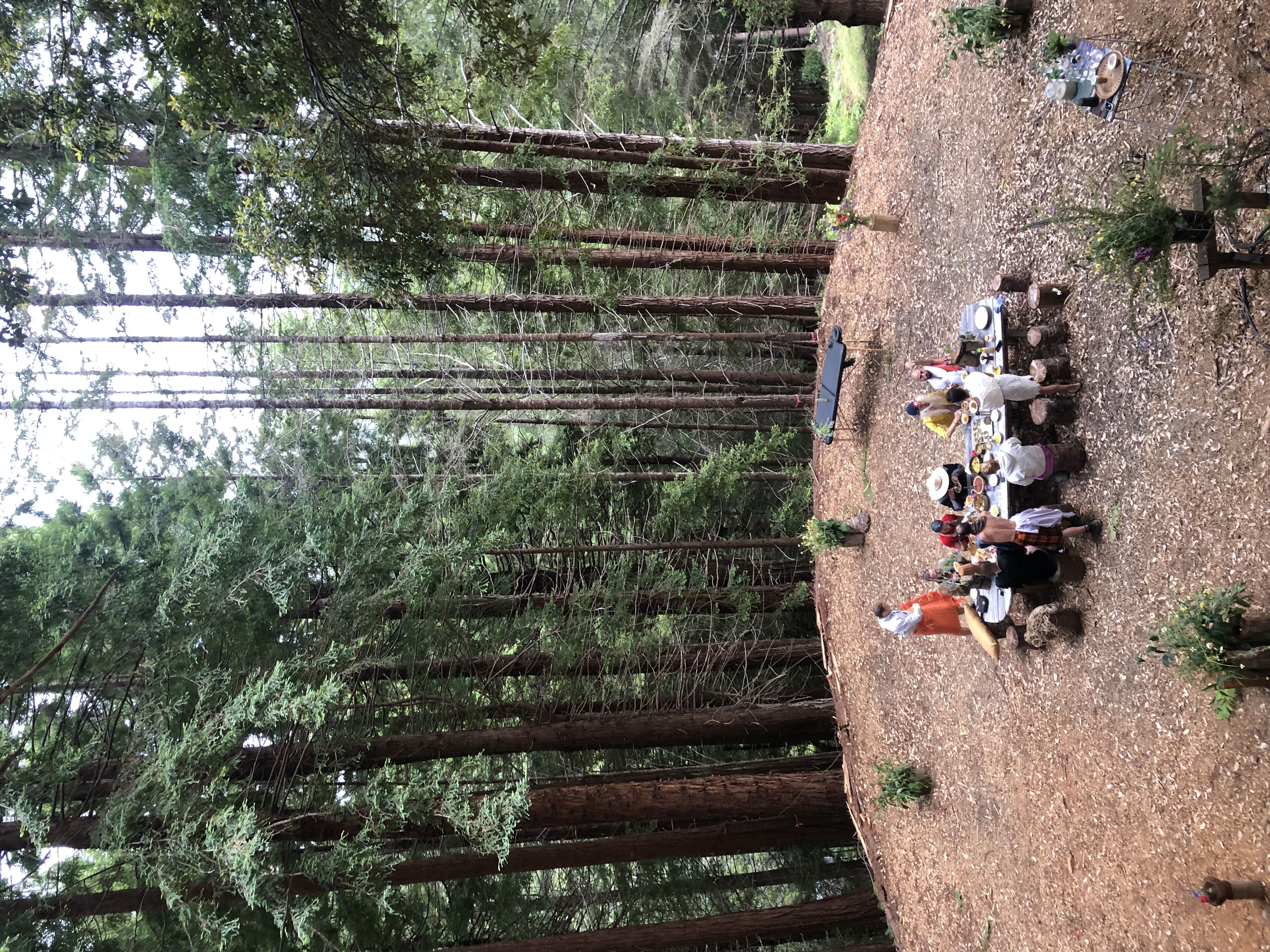
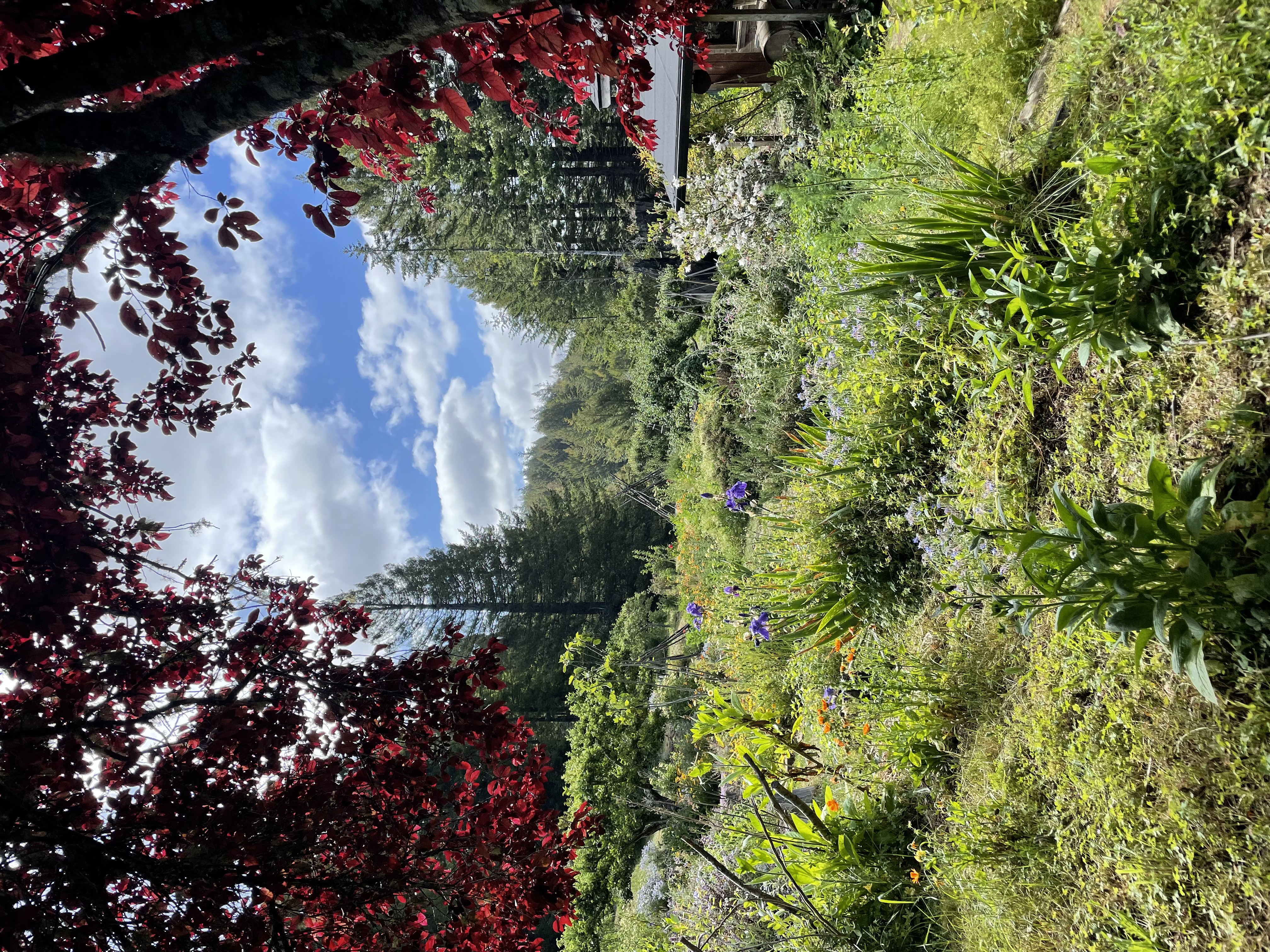
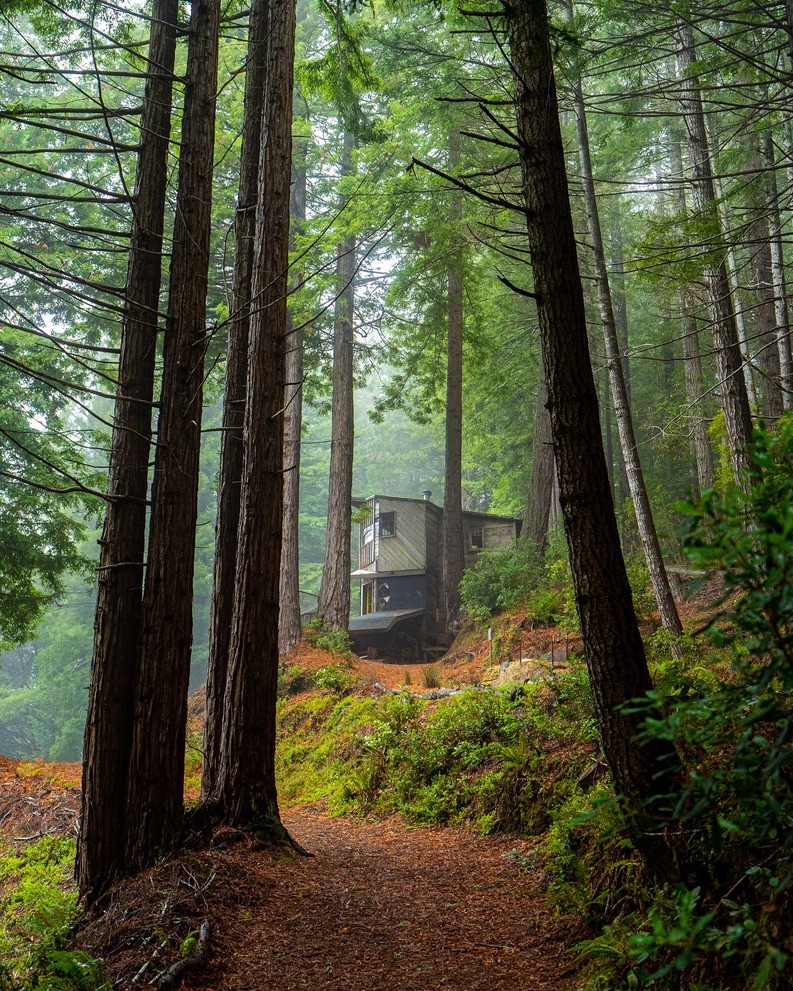
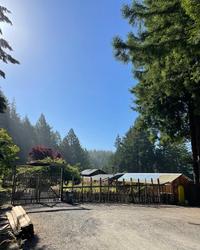
Seasons
Tending a cabin fire is big part of daily life during the shorter days and cooler nights from September to April, staying warm and dry with wood we harvest from the land (though just two miles from the coast we rarely get below an occasional frost at night). The winter is a special time on the land for lovers of lichens and funghi, as the rains bring bursts of exuberant life to the forest floor. In spring the orchard fruit tree blossoms are popping while we prepare the gardens and start seeds. Summers days can bring chilly dramatic fogs rolling in and out or warm sunshine, usually staying in the mid 60’s and rarely getting much above the low 70’s. In the fall we gather seeds to sow the following season and press apples which we transform into our own apple cider vinegar.
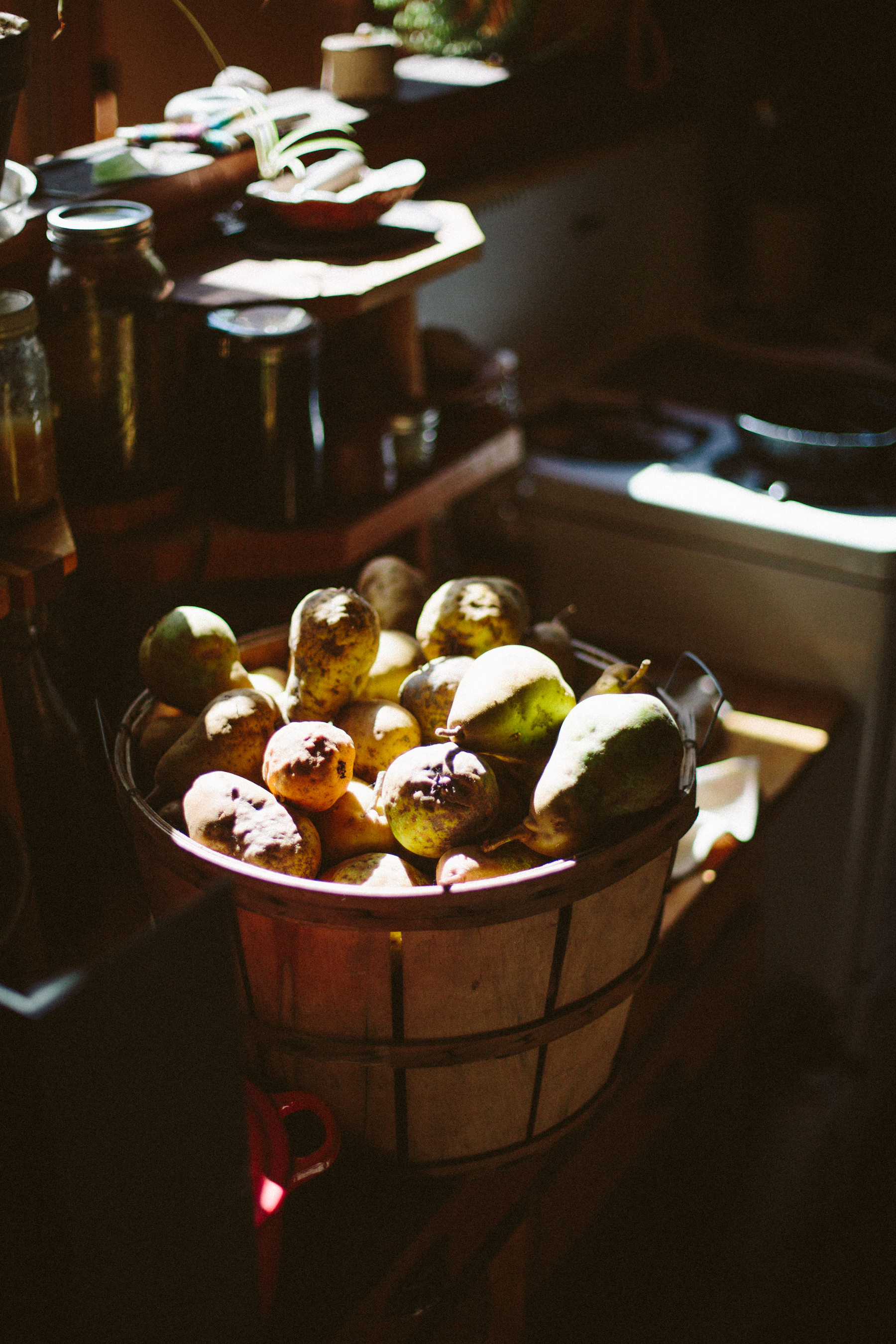
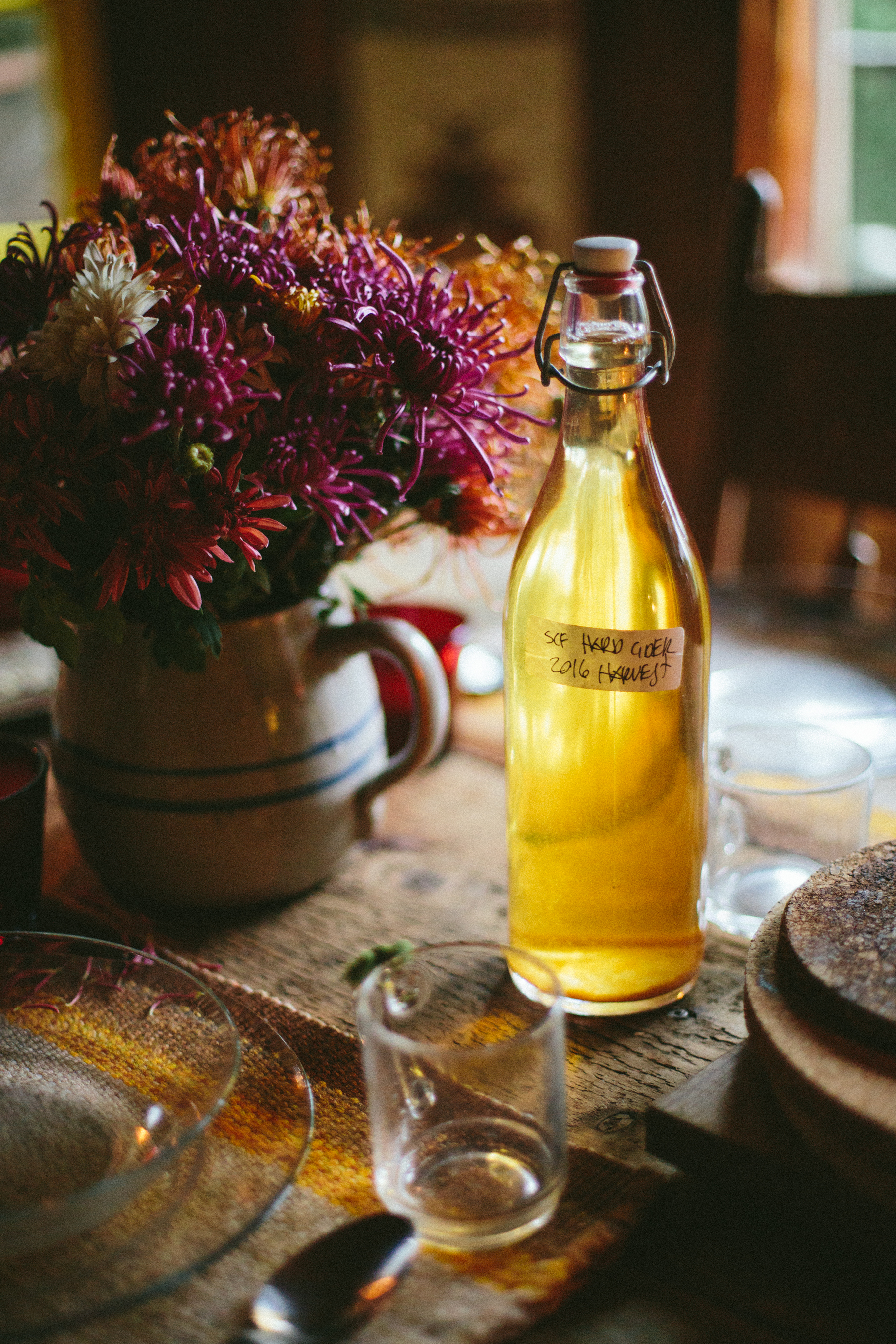
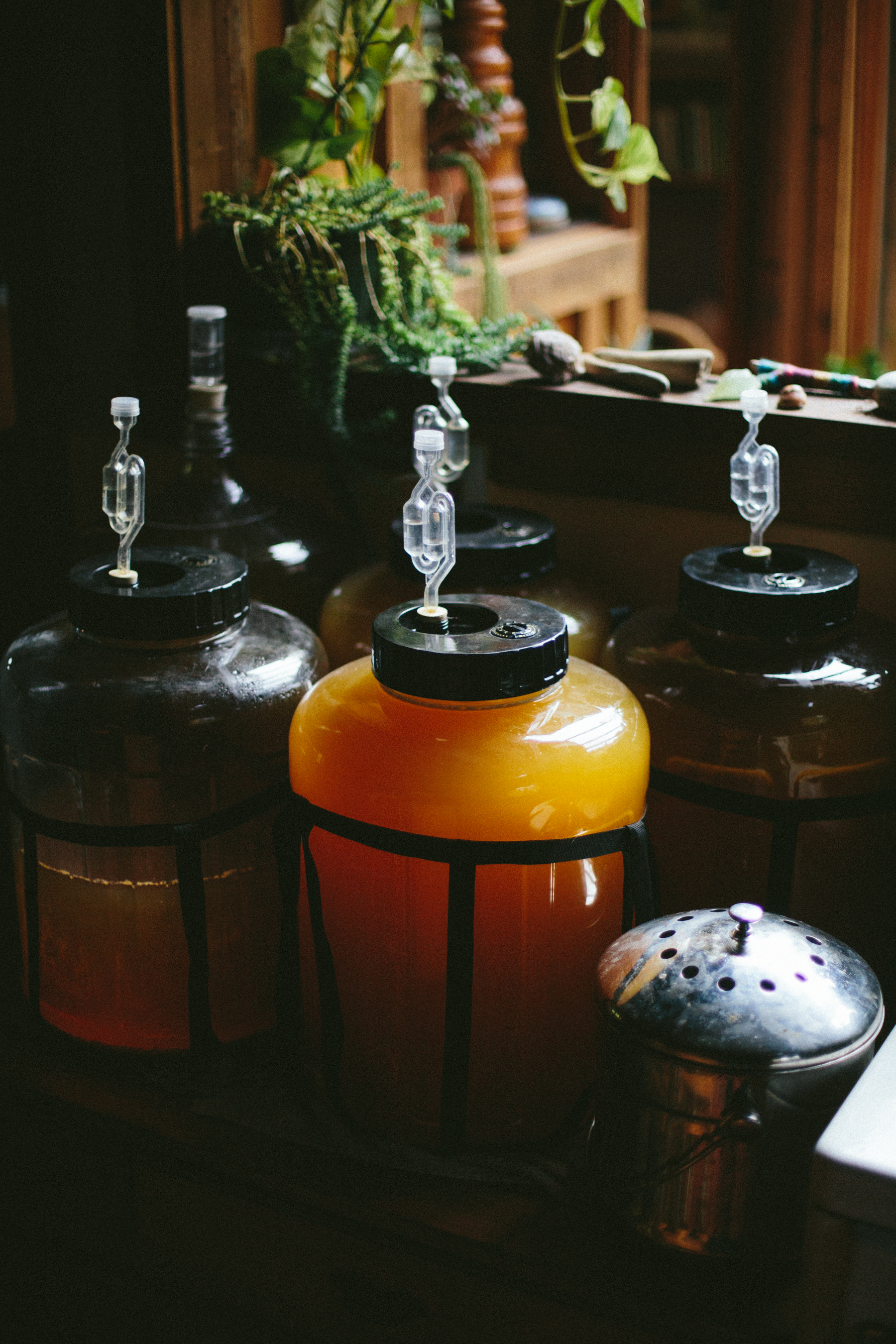
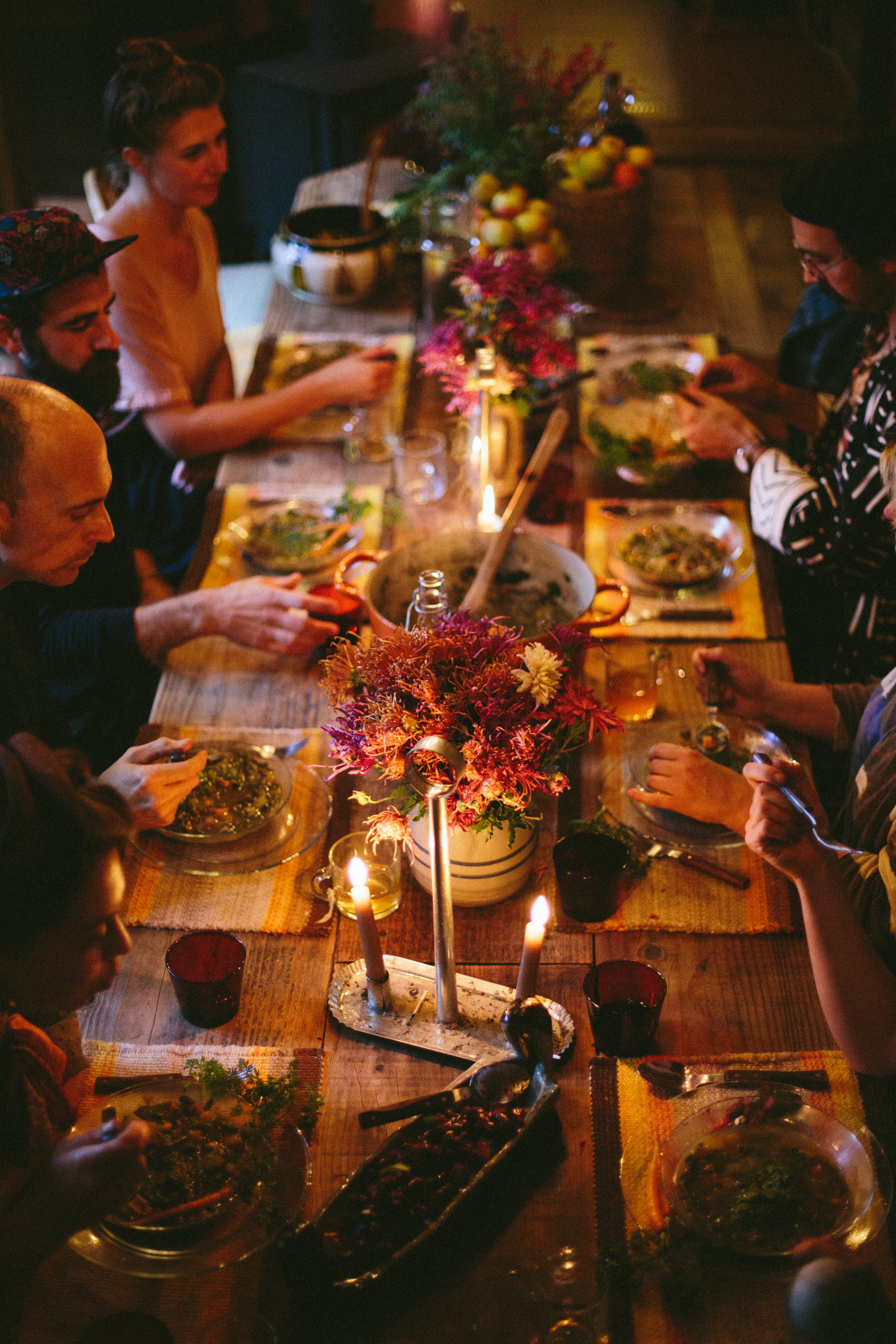
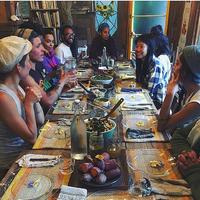
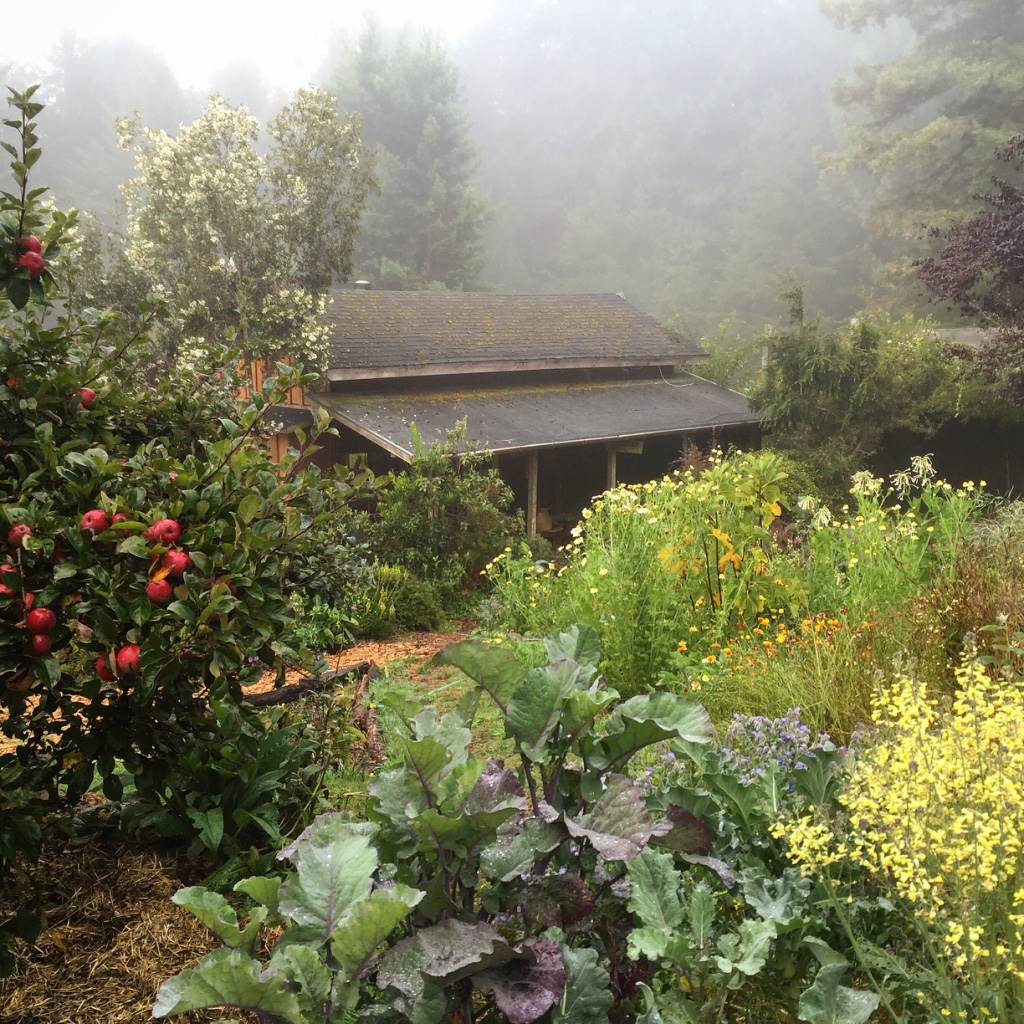
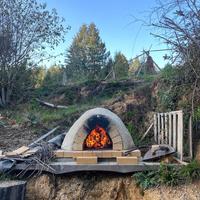
Questions of quotidian domestic life are fundamental at Salmon Creek Farm. What are the local and global implications? It can also be very sensual living this close to the seasons and the land...
︎ ANIMALS: For many reasons SCF is vegetarian. Many carnivorous visitors have found it to be a helpful place to experiment with a plant-based diet for the first time.
︎ FOOD: We eat with the seasons and aim to grow, forage, and preserve as much of our own food from the land as possible and invite everyone eating from the land to participate in that seasonal process.
︎ WASTE: We do not provide receptacles on the property and guests are responsible for their own ‘trash.’ We strive for zero waste, shop for minimal/no packaging, and compost zealously.
︎ HUMANURE: All cabins have cute outhouses with sawdust lined humanure buckets that are emptied regularly to nearby compost sites where it transforms into the richest soil on the land, and after a few years is spread around as mulch at established fruit trees.
︎ WATER: Our water is collected from a spring on the land where it is filtered and pumped to the top of the ridge where it is stored, treated, and gravity fed to all of the cabins and gardens.
︎ SHELTER: Our cabins were all constructed with scavenged wood, windows, doors, and fixtures in the early 1970’s. We have continued in that spirit, also working with wood sustainably harvested and milled from the land.
︎ HEAT: To stay warm from October through April we burn wood sustainably harvested wood from the land which we chop and cure throughout the year.
︎ FURNISHINGS: Local thrift stores have been the source for most of the cabin furnishings, with a special focus on ‘natural’ materials like woods, canes, ceramics, cottons, wools, etc. and promoting the re-use of local materials and products that still have life.
︎ PLASTICS: Just no. But once you try to completely eliminate them from your life, you realize it’s virtually impossible these days.
As the climate is changing, we change, and as with everything, we do what we can, just trying to move with intention in the right direction...
The Coastal Redwoods
Coming to Salmon Creek Farm for the first time, city dwellers are often overwhelmed by the unique and mystical landscape. We lead visitors from the parking lot through front gates into sunny gardens and orchards followed by a second set of gates that dramatically deliver us into the shaded depths of the Redwoods. A wide, curving dirt logging road hugging a south-facing slope takes us into the big trees that loom above us and line our path ahead, stepping down the slope as far as the eye can see.The trees are impressive, but we need to be reminded that they are tragic and tiny shadows of the giants that grew here for eons. The first Coastal Redwood fossils date back more than 200 million years to the Jurassic period. These ancient trees — among the tallest and oldest lifeforms on earth — grew up to 380 feet tall and 30 feet across, living up to 2000 years.
The indigenous Pomo people make use of the companion plants of the Redwoods, but do not typically cut them down. They might use fallen trees to make planks for houses or hollowed-out logs for canoes. Before commercial logging and clearing began in the 1850s, Coastal Redwoods naturally occurred on around 2 million acres along a 450 mile coastal strip. Only 5 percent of the original old-growth forests remain today.
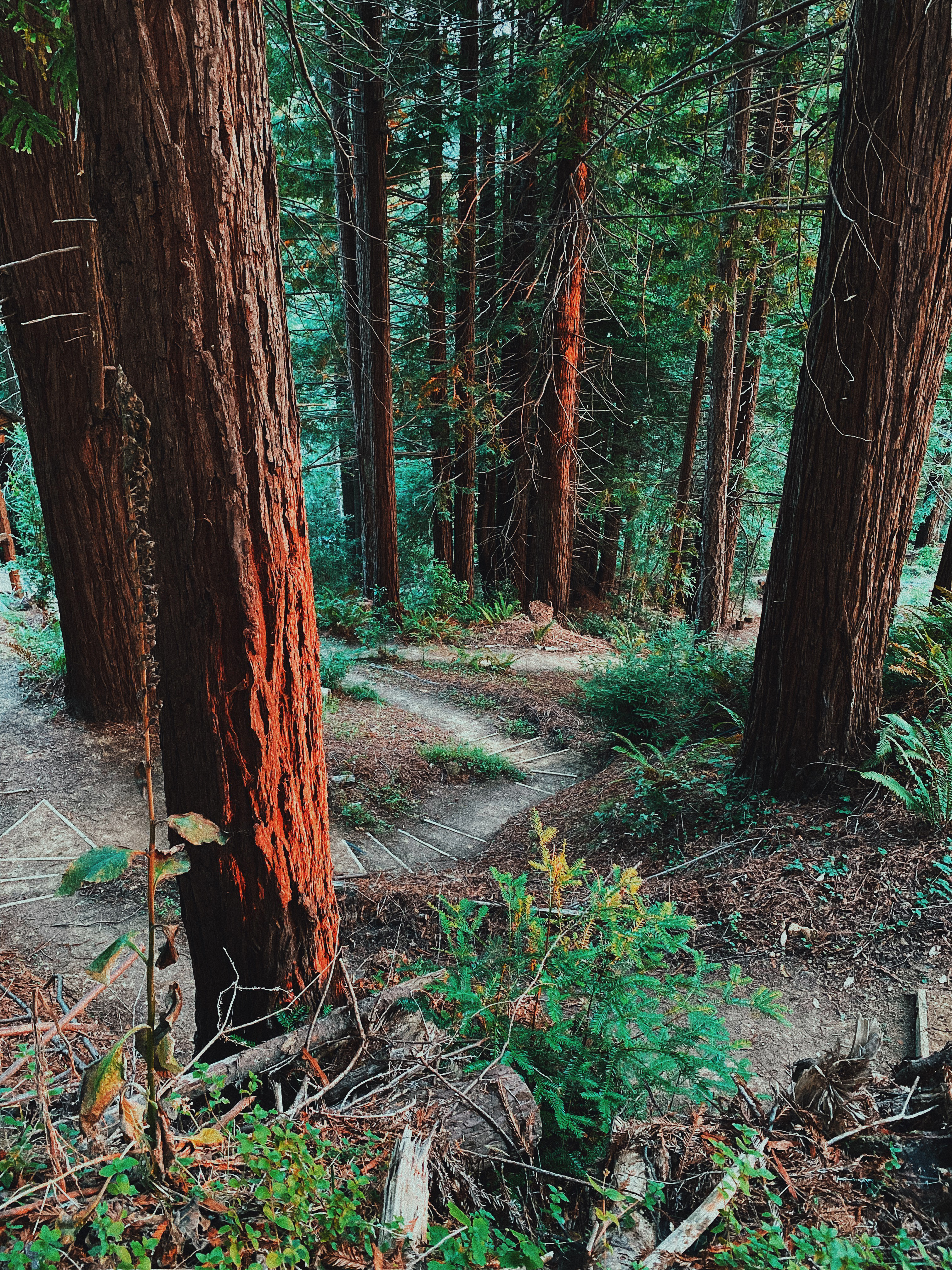
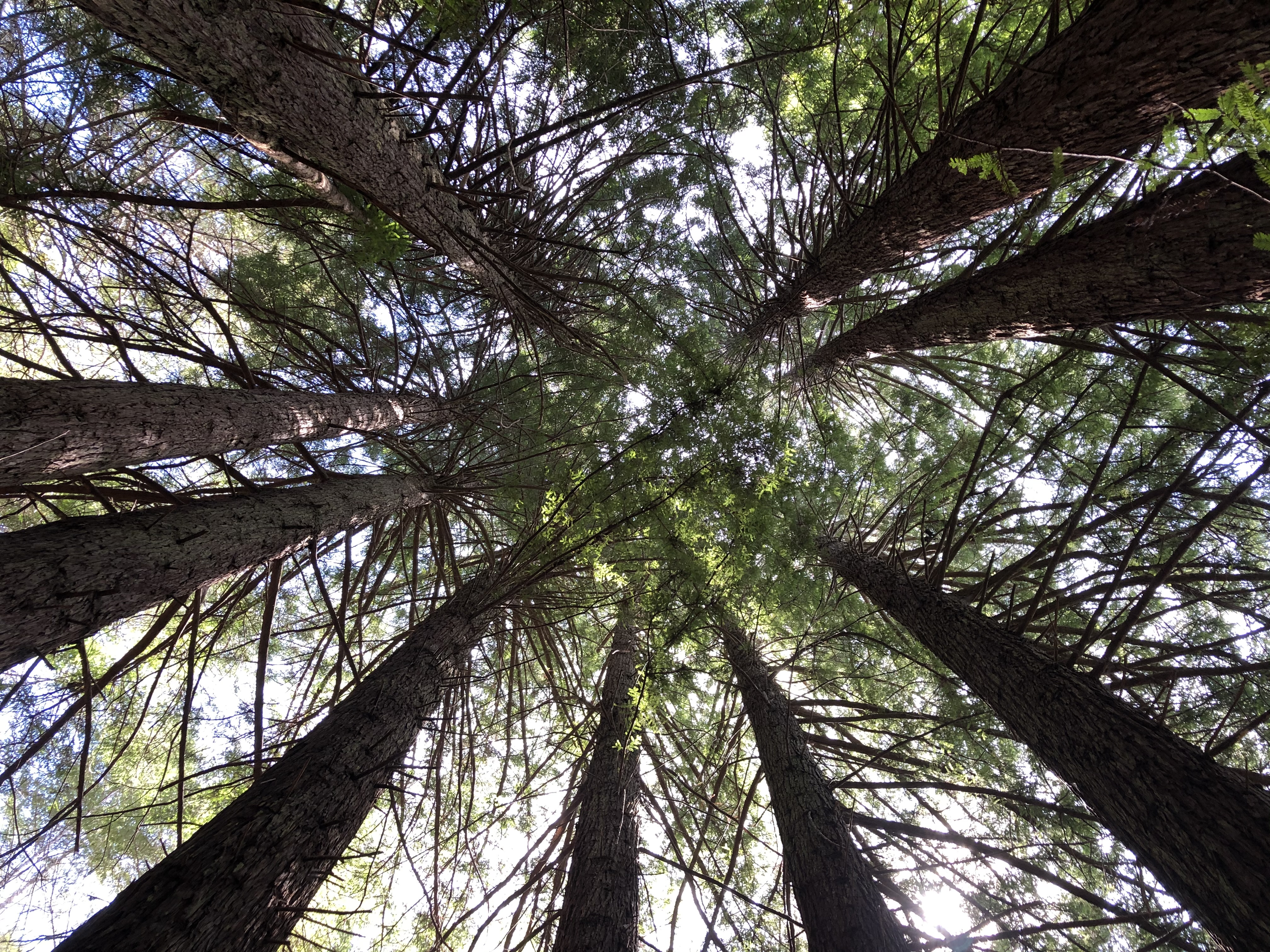
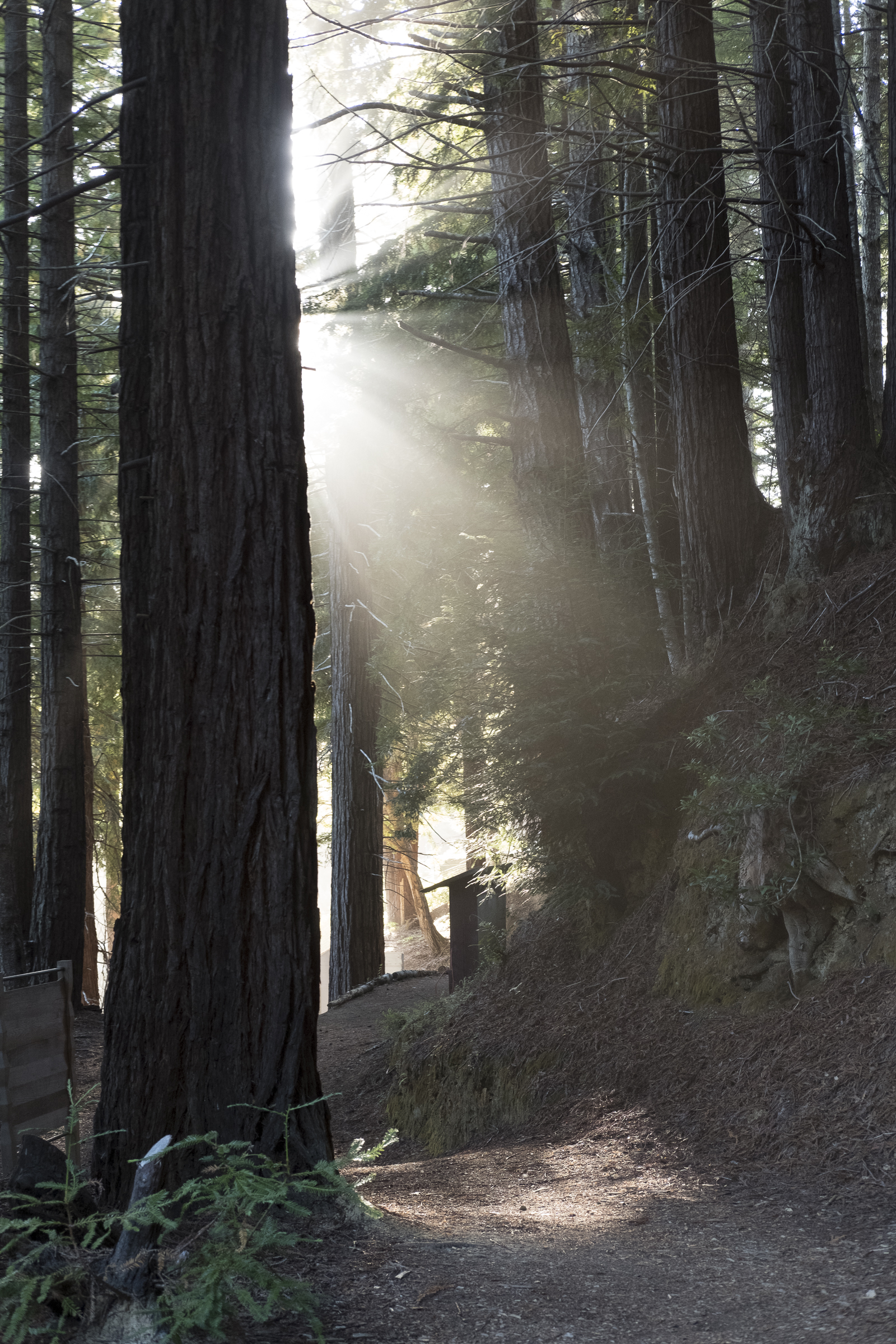
In the 1870’s, the land now known as Salmon Creek Farm was clearcut for lumber and burned for pasture. New growth sprouting up from the roots of the ancient Redwoods, along with their companion plants and Fir trees grew back until that forest was clearcut for more lumber, and burned once again from 1953 to 1963. Where massive trees were once spaced out around five to fifteen per acre, this new ‘un-natural’ post-industrial landscape of second- and third-growth forests would find thousands of trees per acre. This choked-out and over-grown landscape blocks sunlight to the forest floor, inhibits diversity of companion plants, and prevents any of the leggy, skinny trees from maturing to their full potential size.
We have been trying to heal these damaged woods, limbing up dead branches, thinning Fir trees, giving the most promising second- and third-growth redwood trees a chance to grow up strong, and making more space and light for the native plants that have evolved over millennia with these giants.
Gardens & Orchard
On your way to the cabins you pass through two acres of organic herb, flower, and vegetable gardens punctuated by compost piles, Hugel mounds, and terraced fruit trees. What we don’t harvest or eat, we let flower, dry up, set seed, and naturalize...making for gardens that become progressively wild through the season.
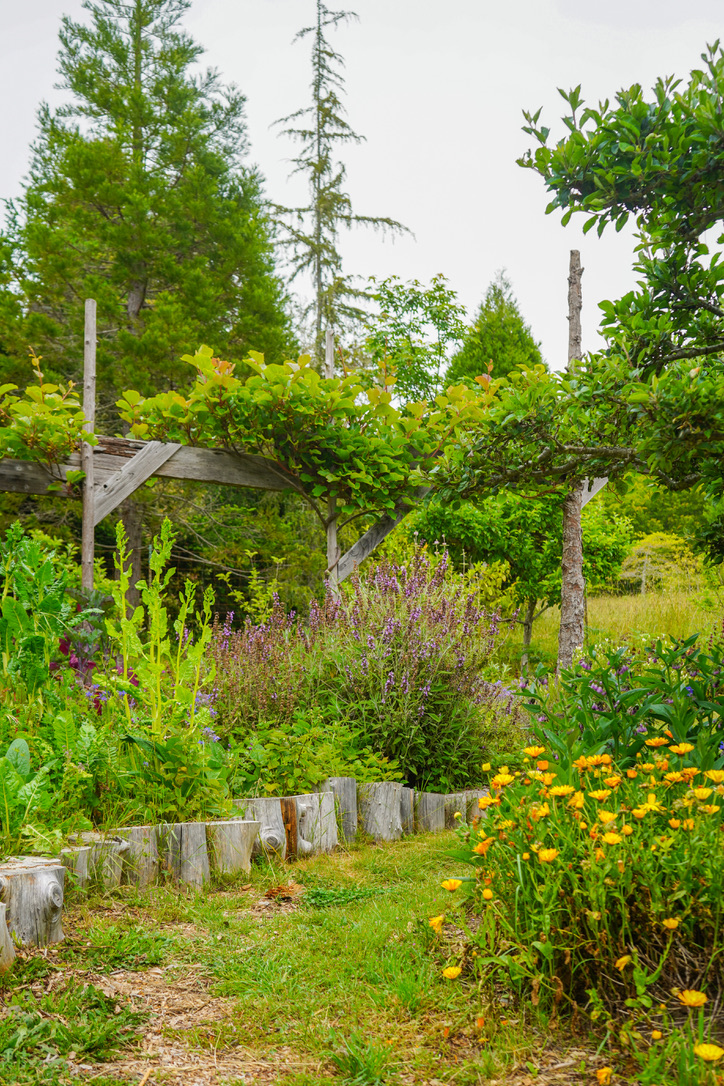
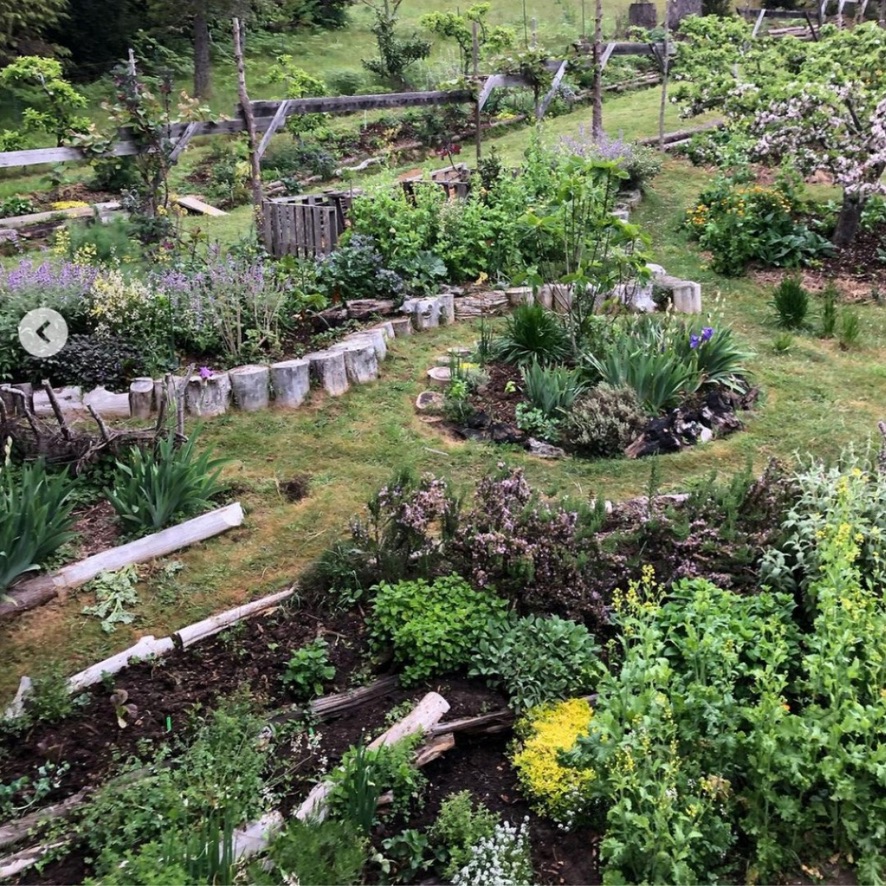
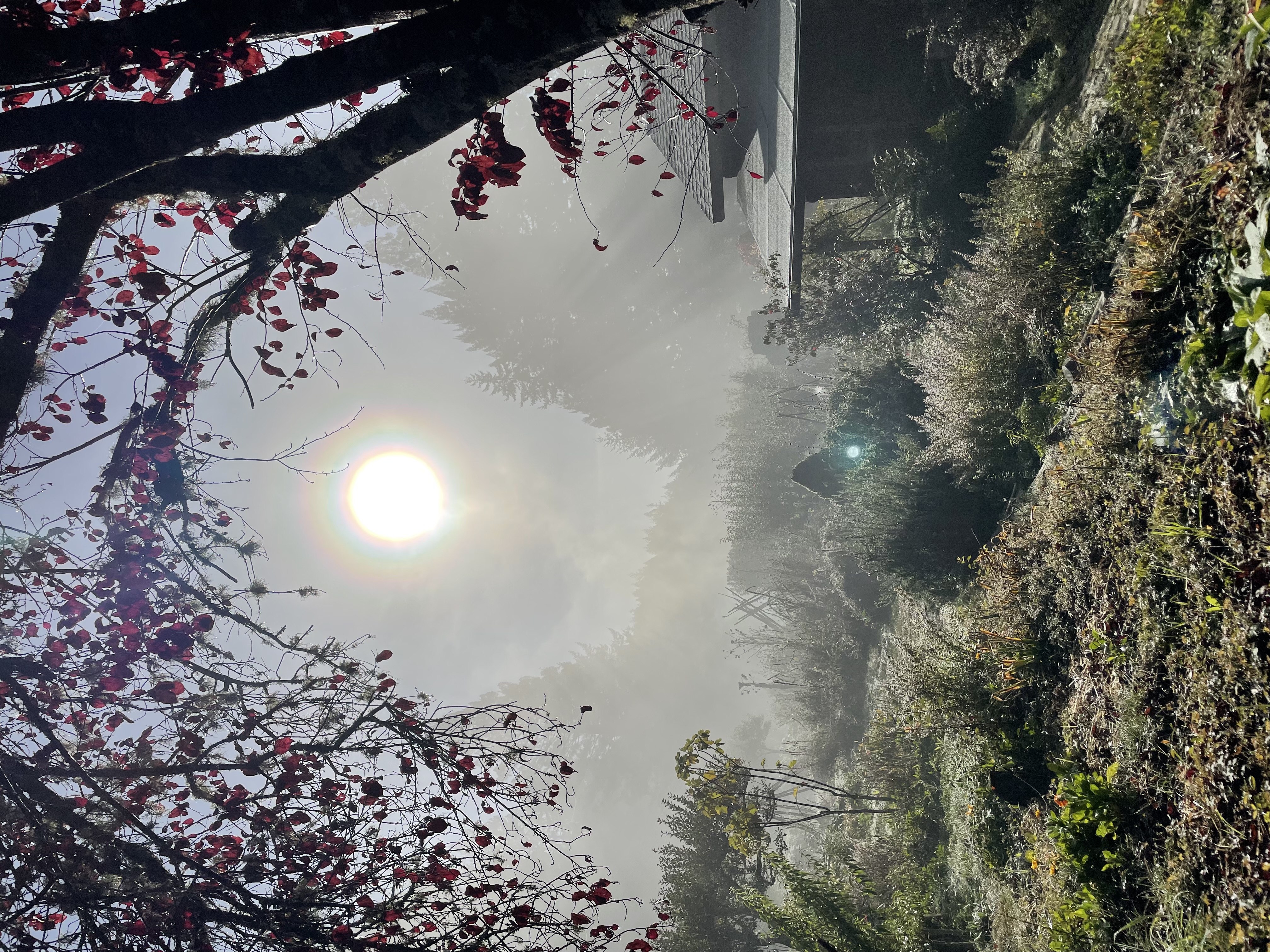
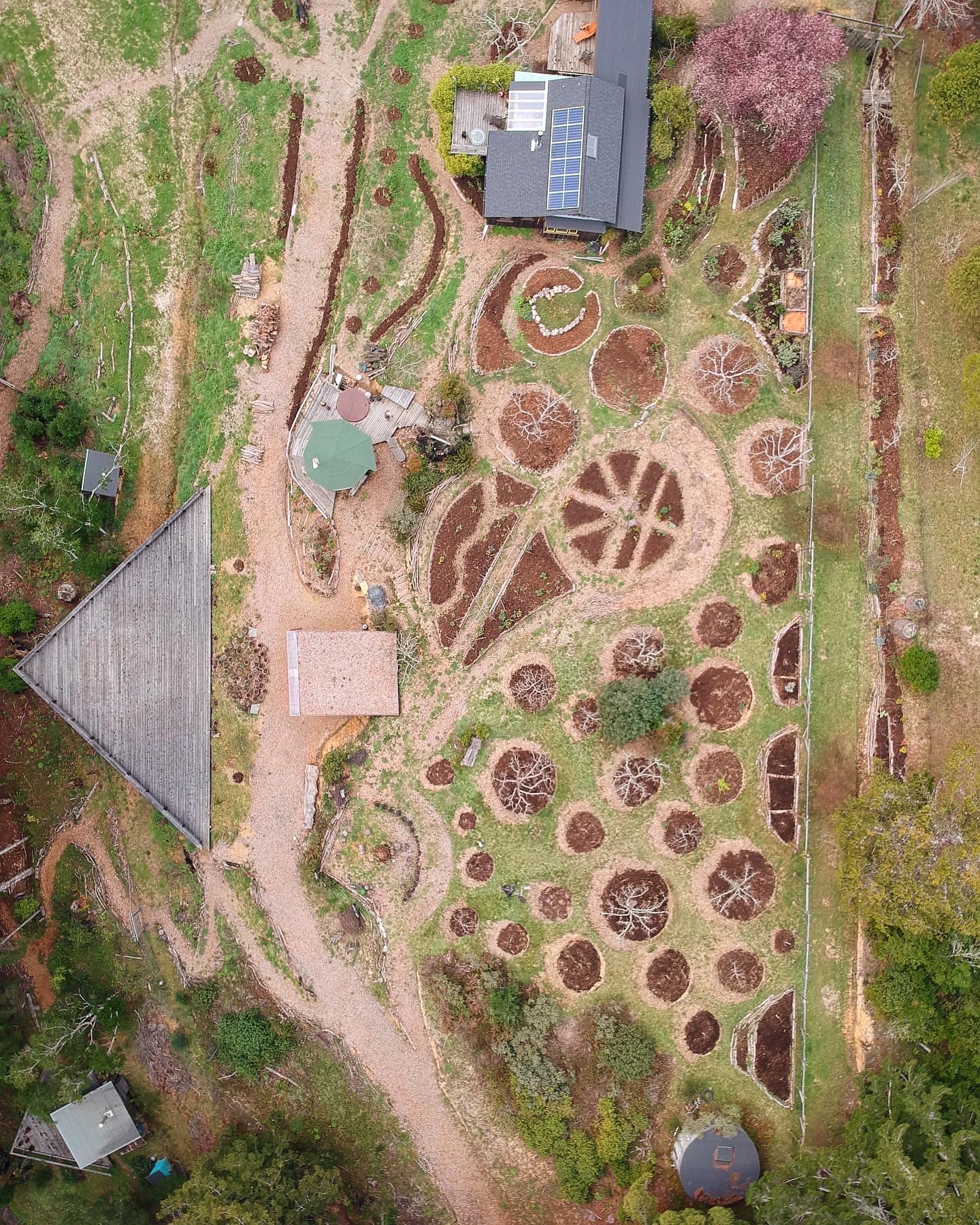

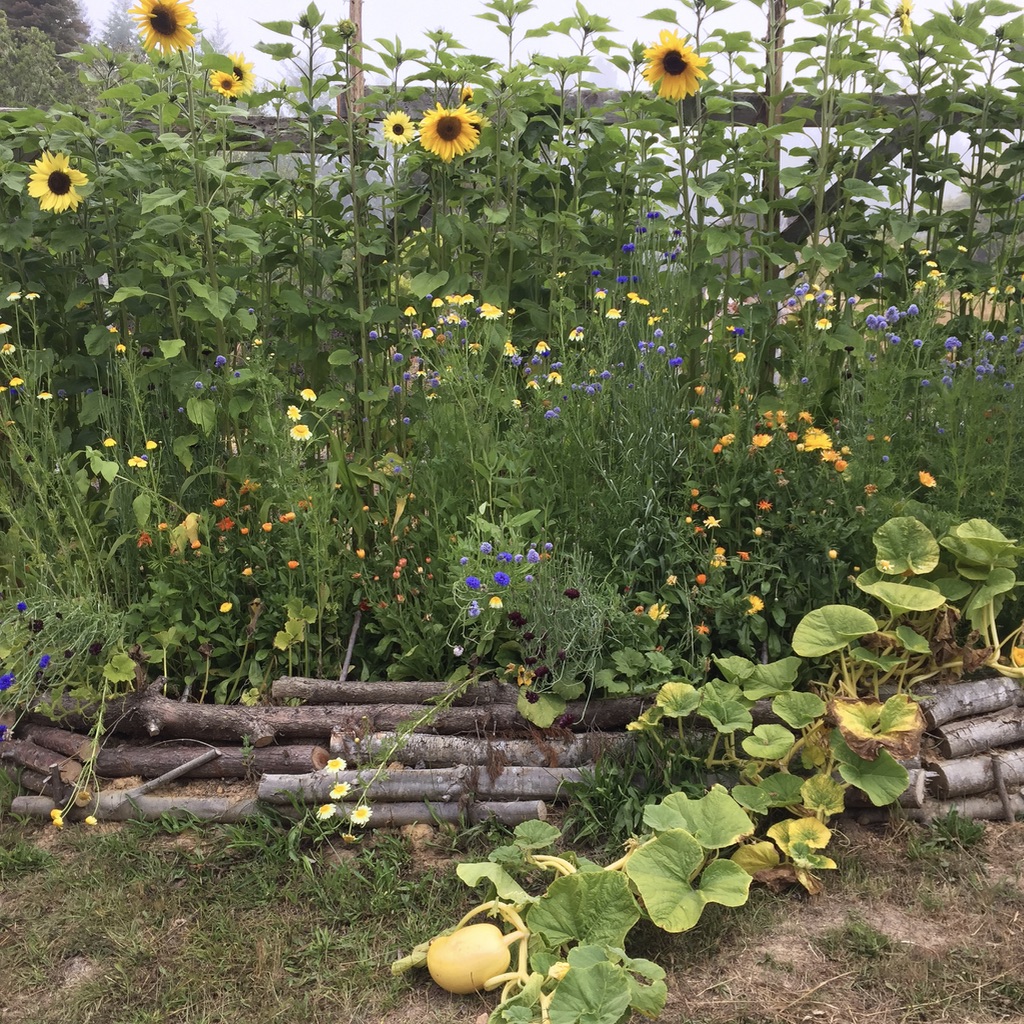
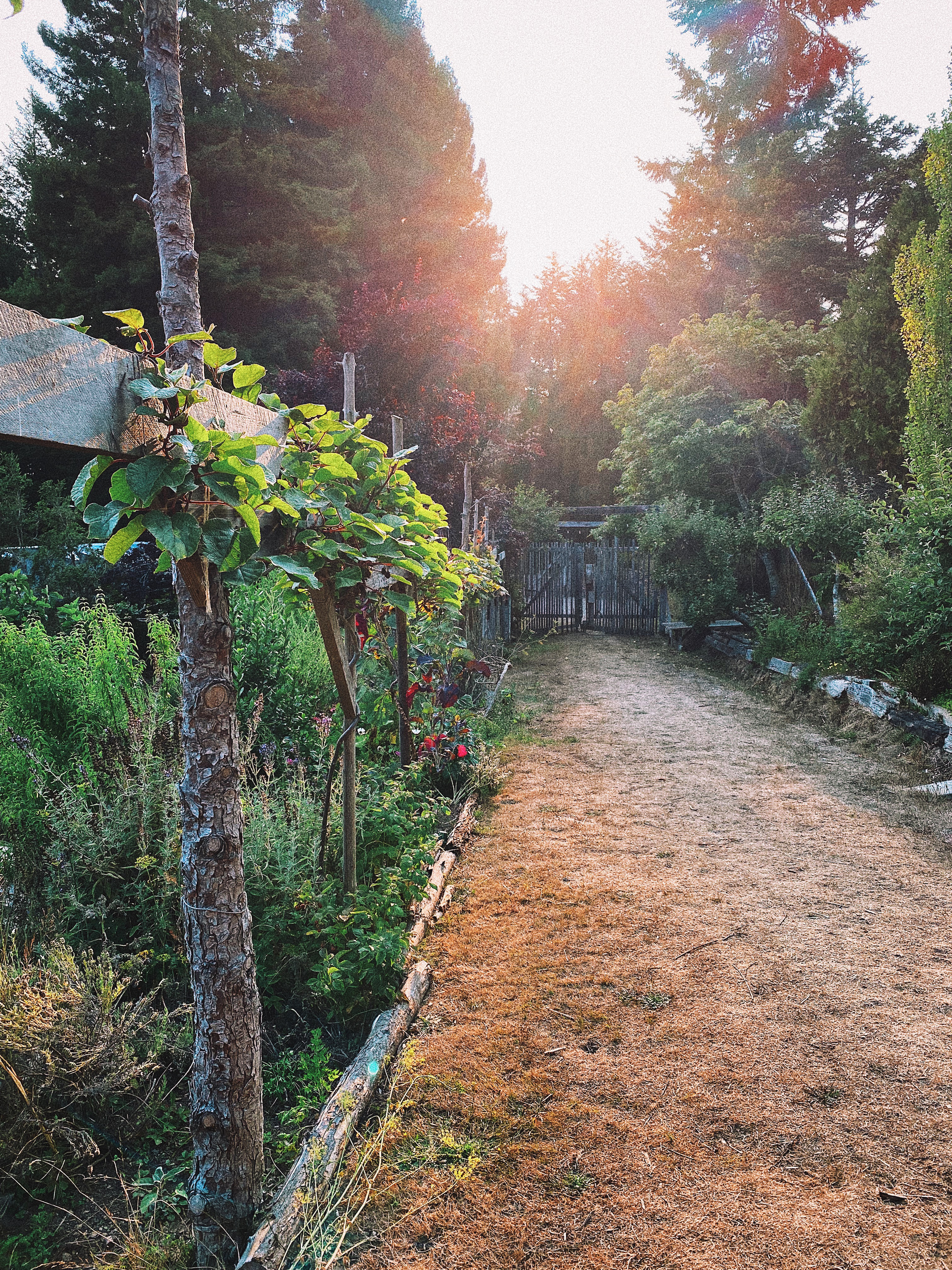
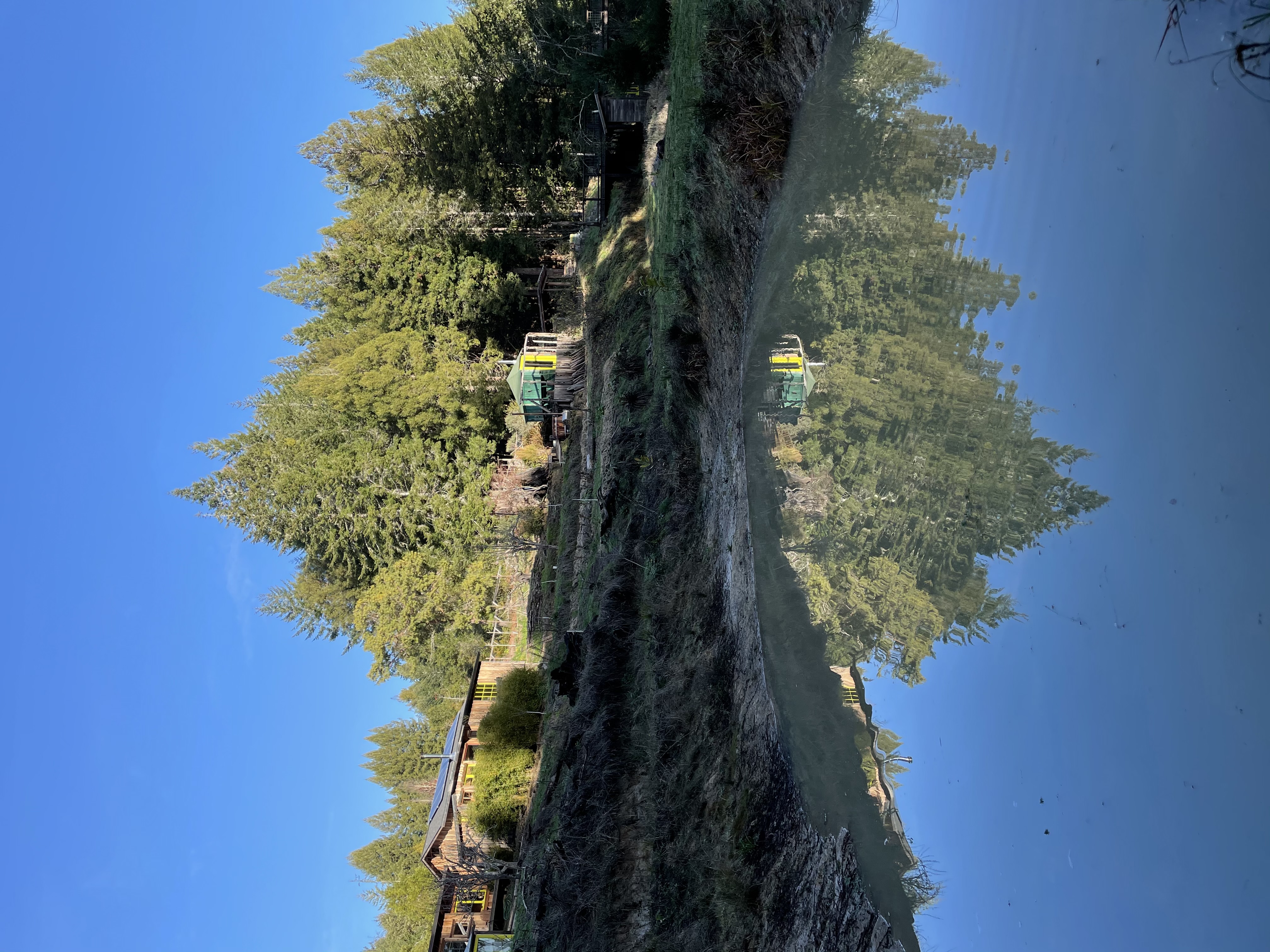


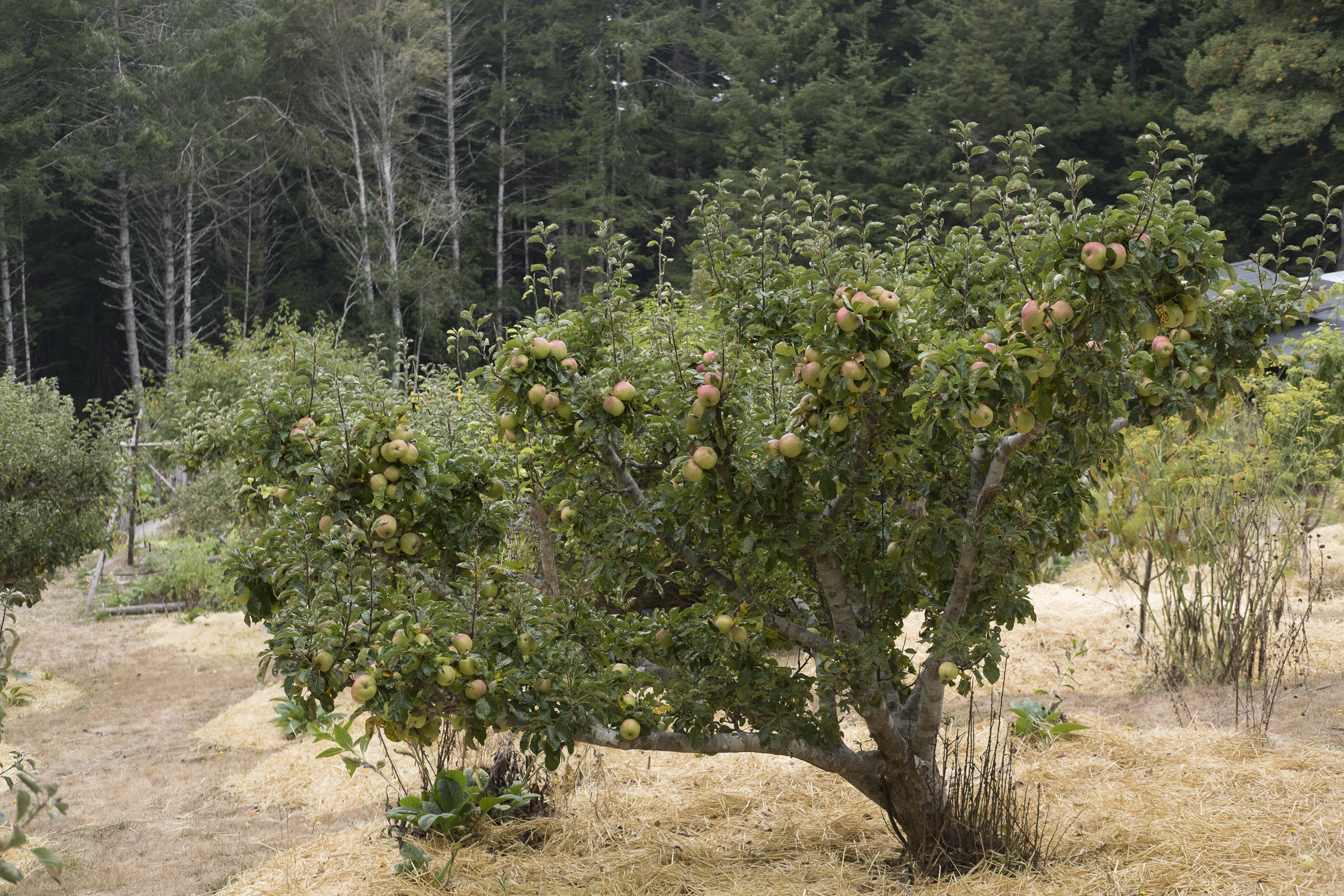
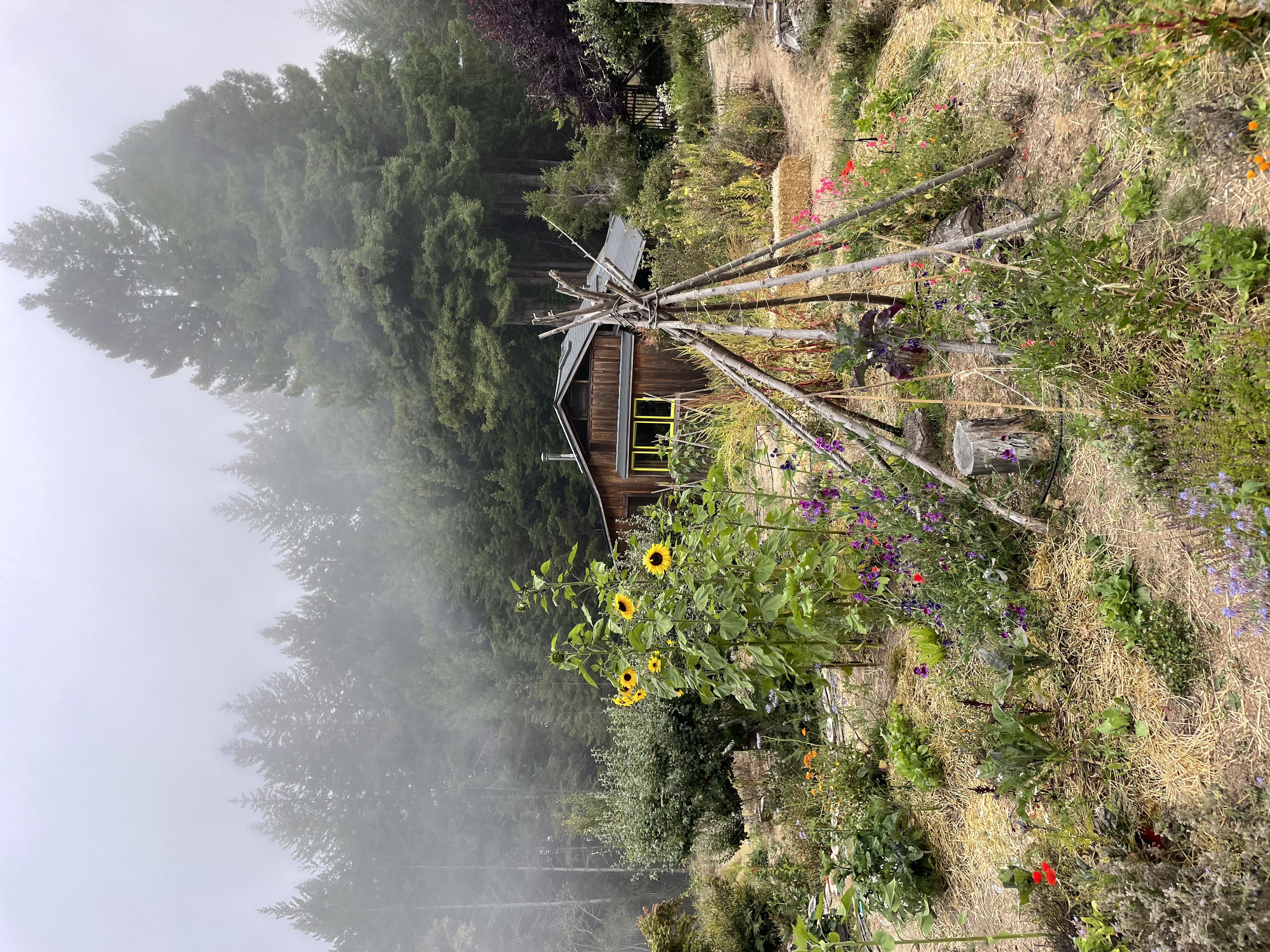


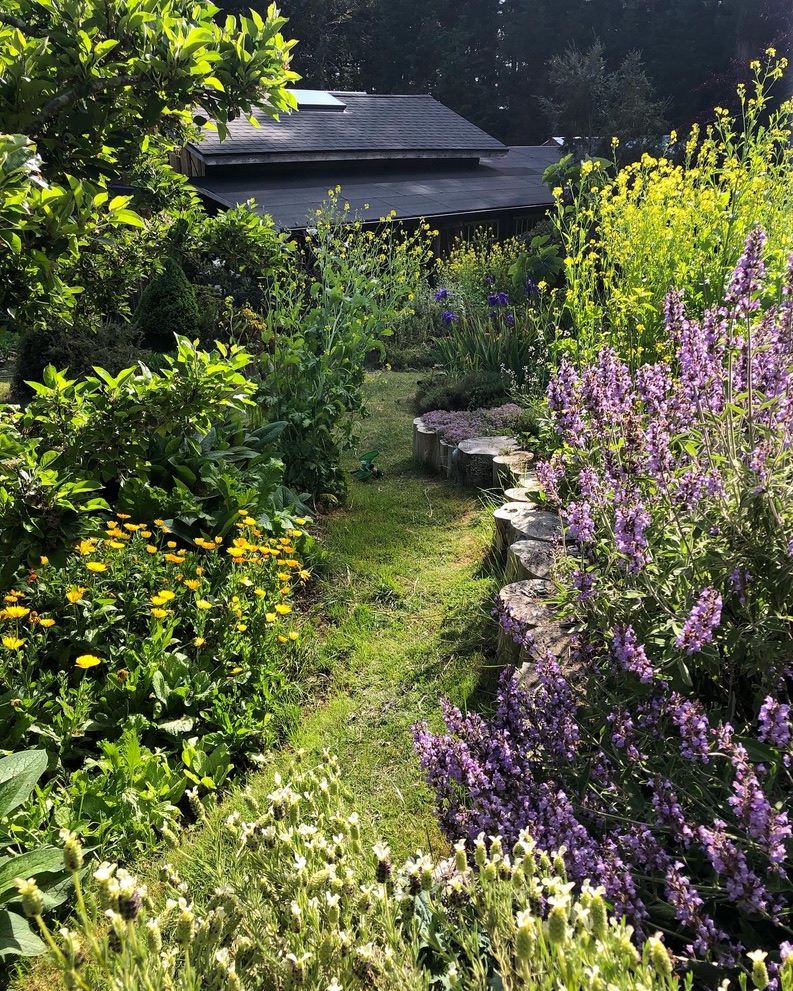

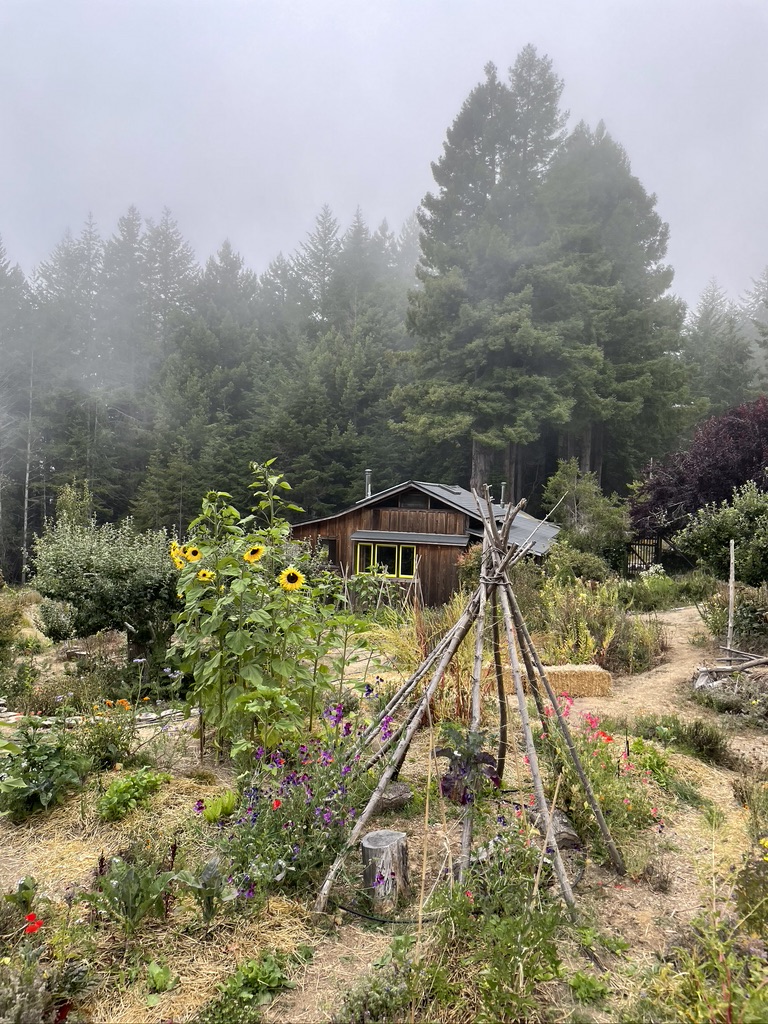

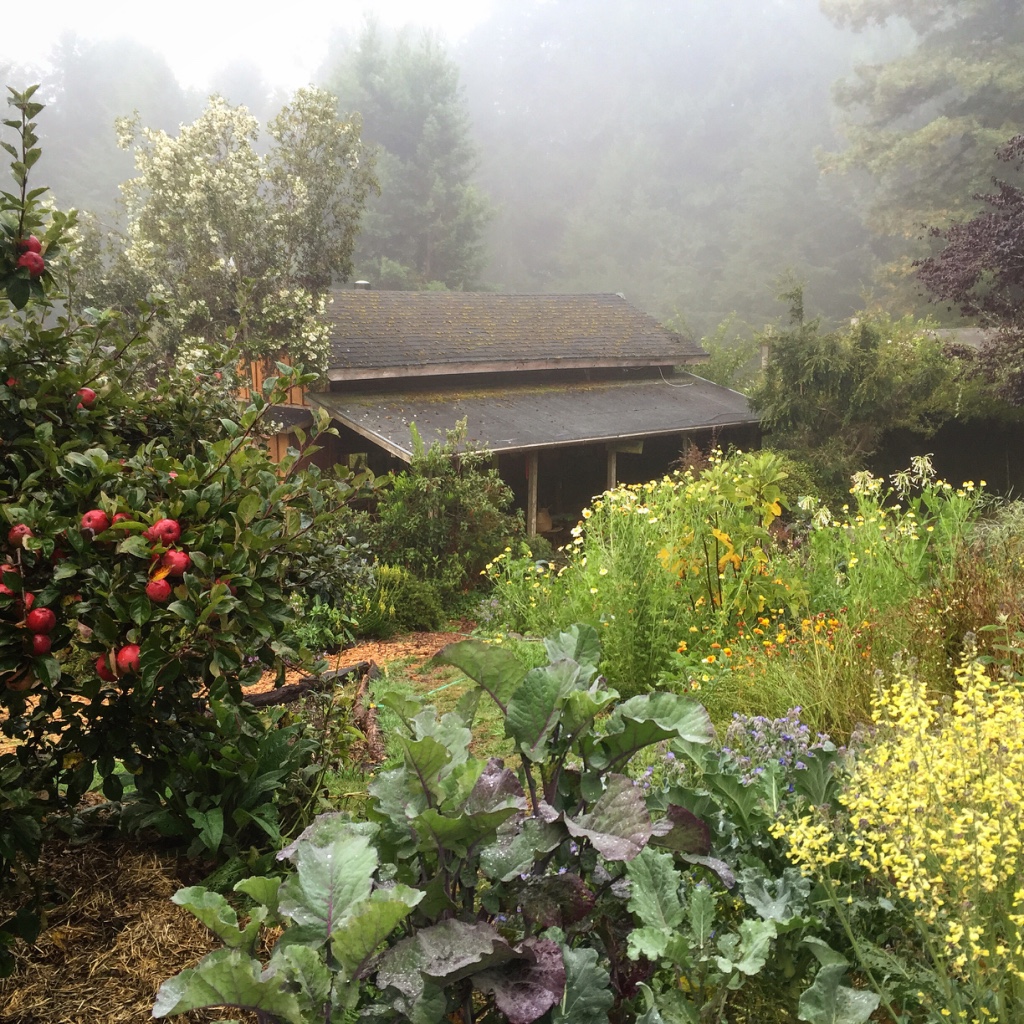

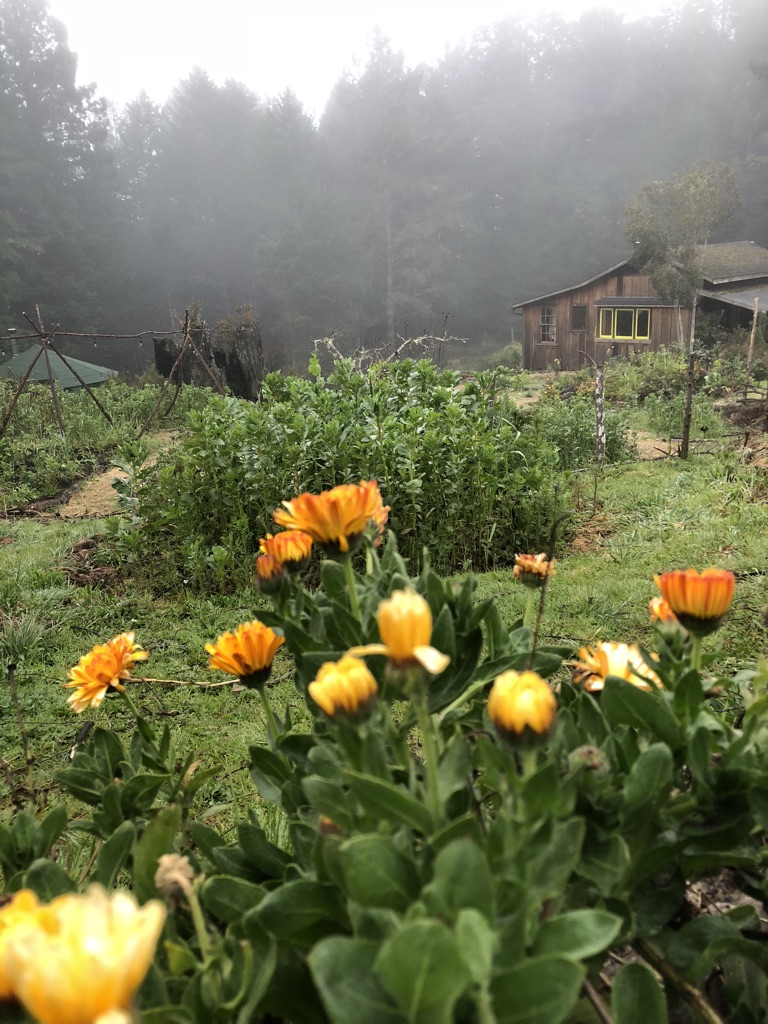
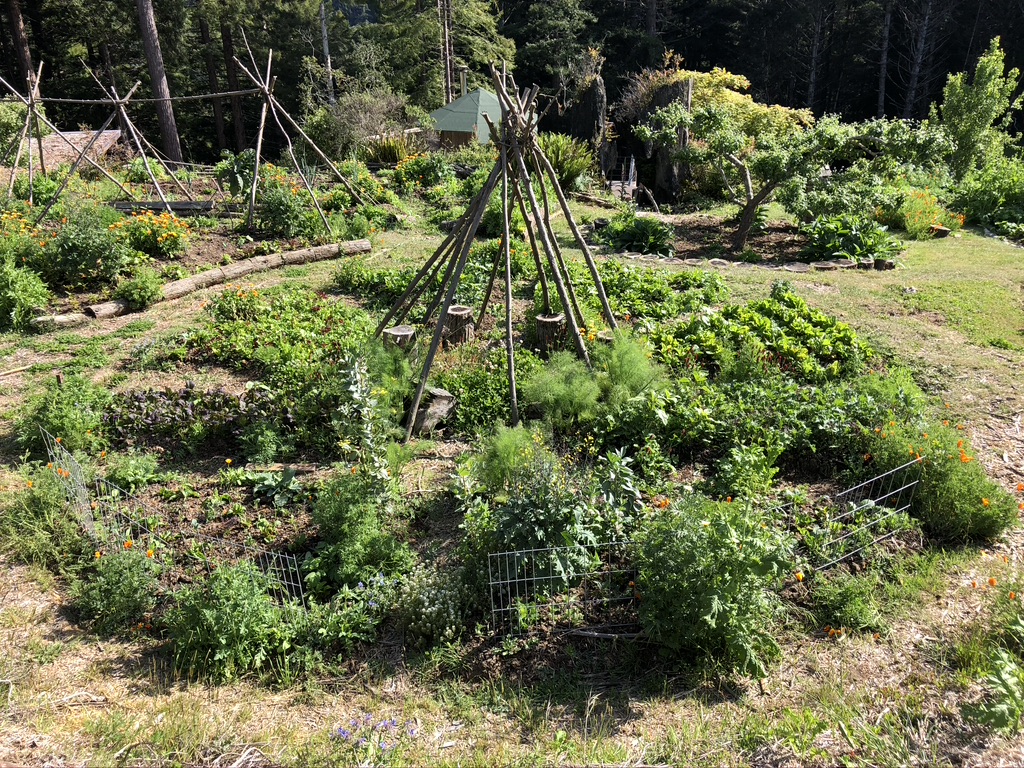
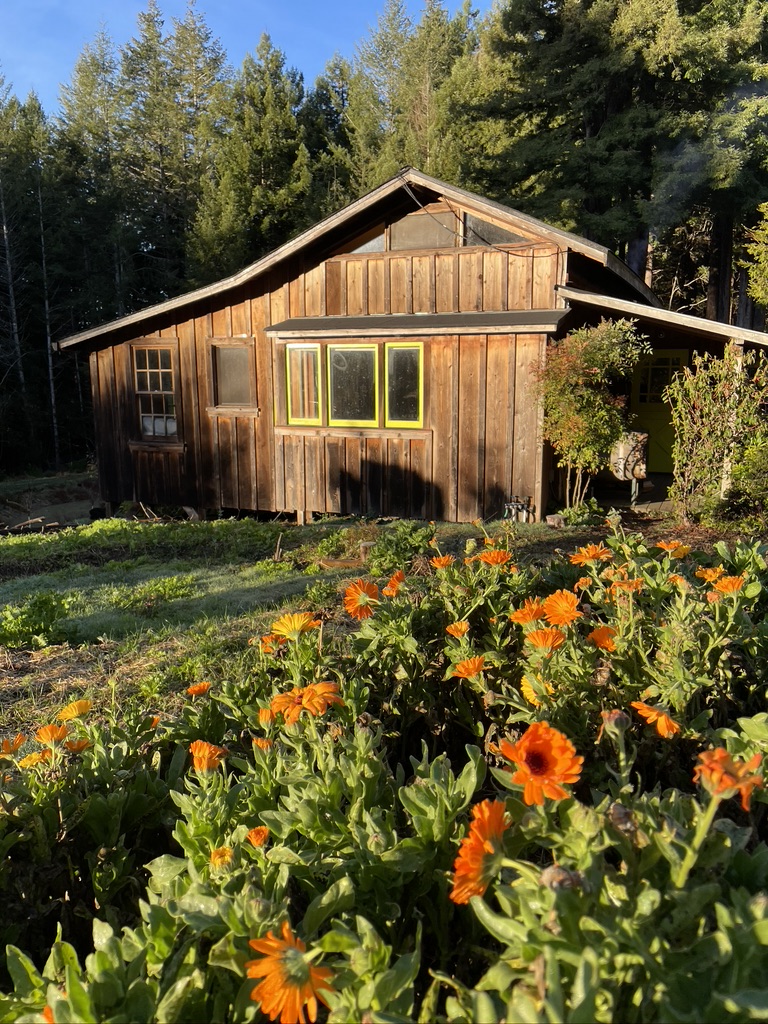

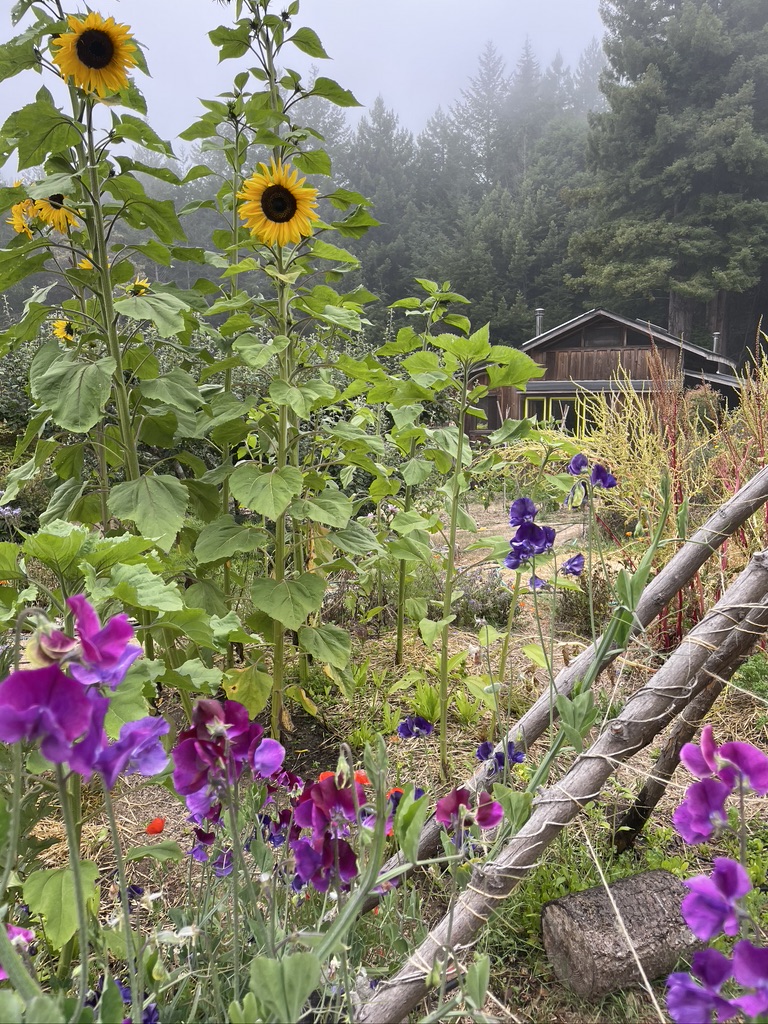
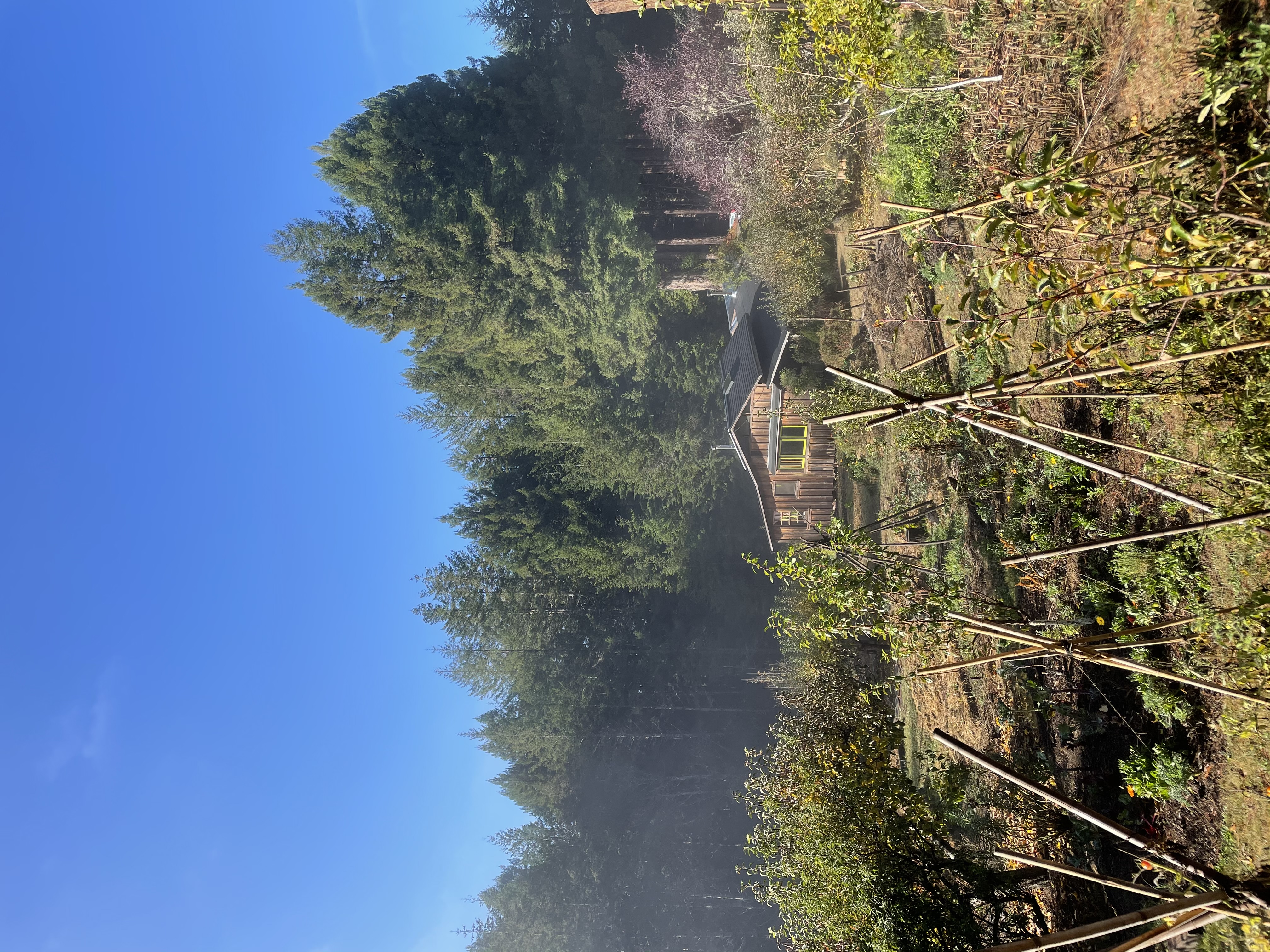
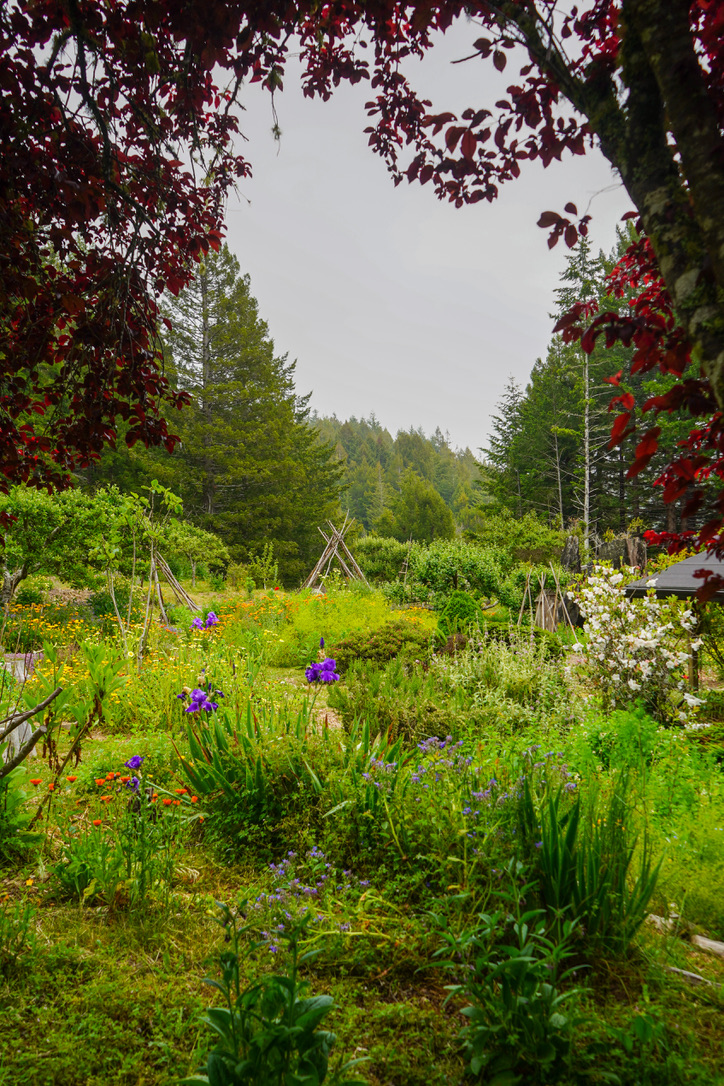

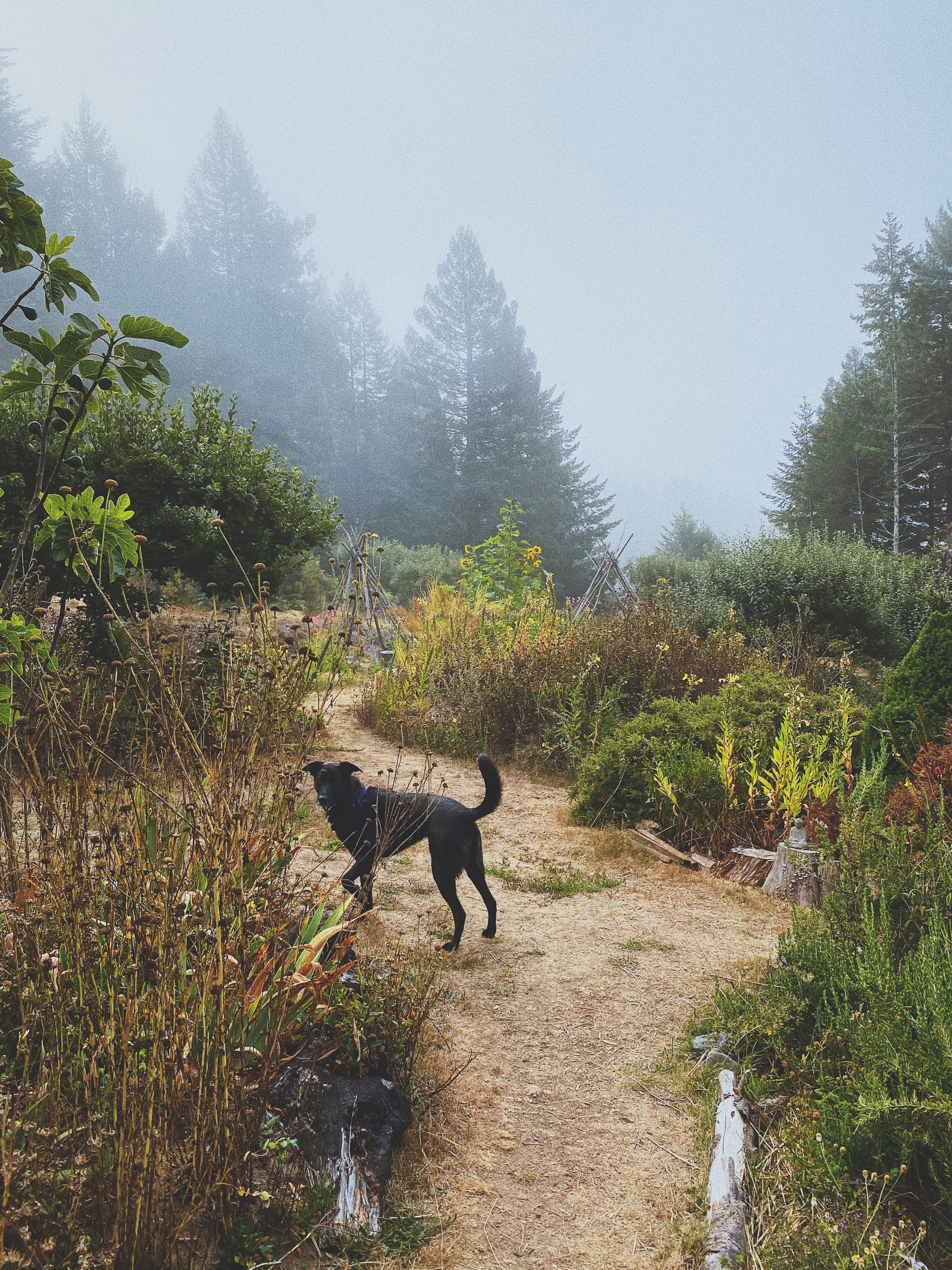
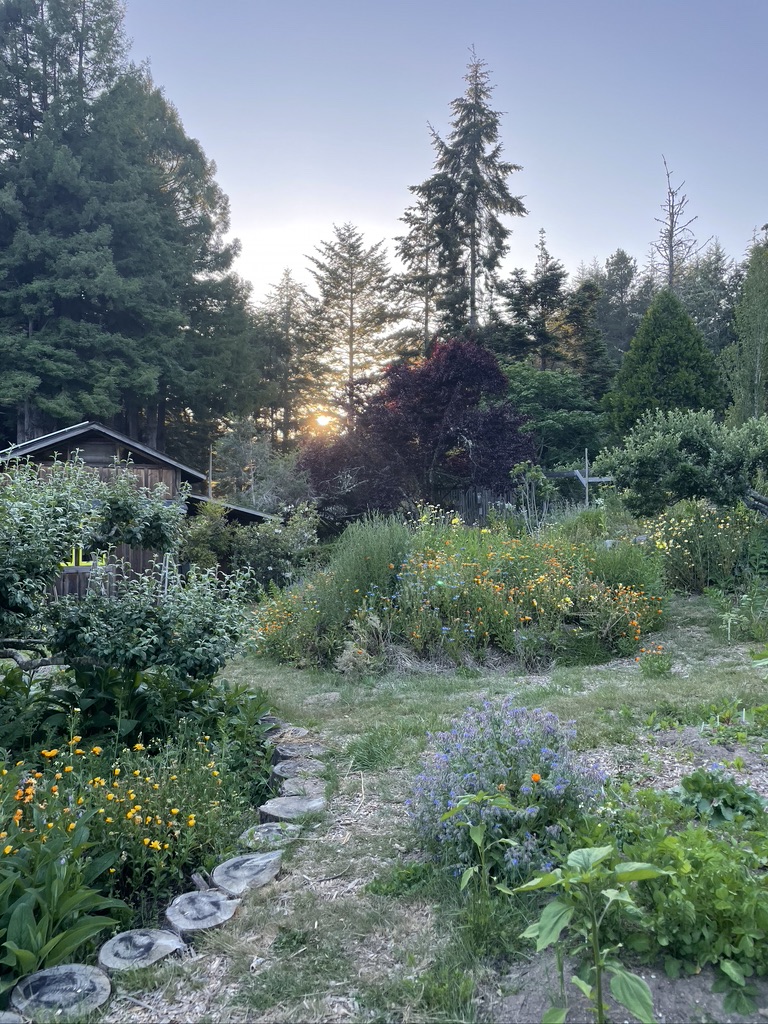
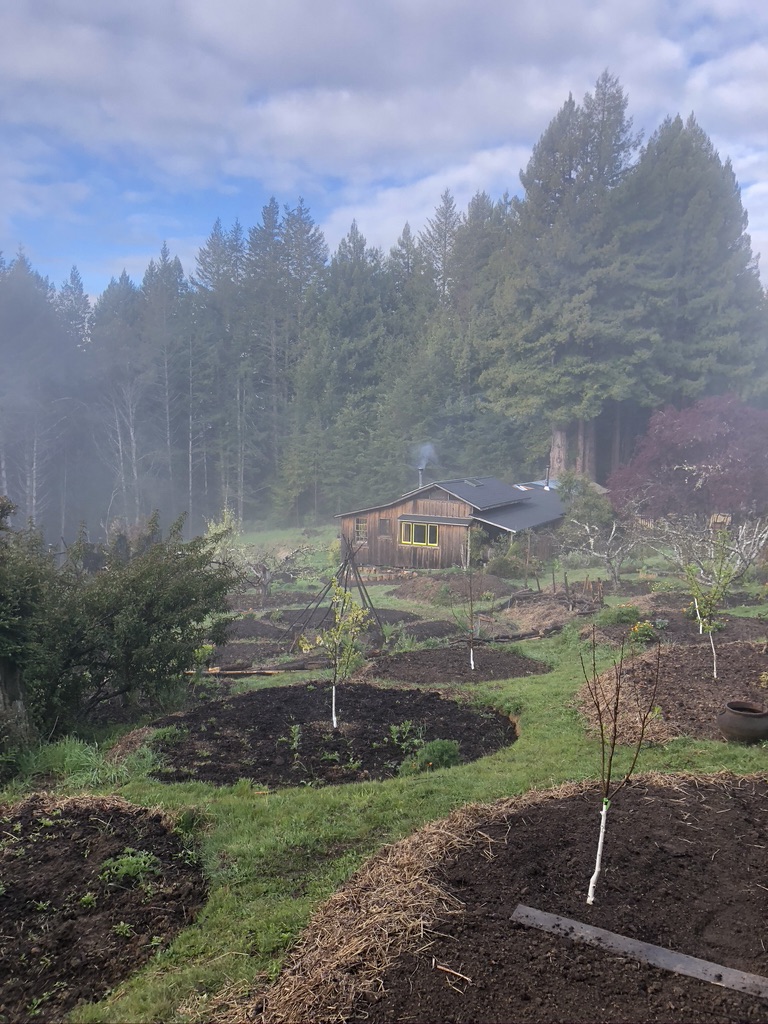
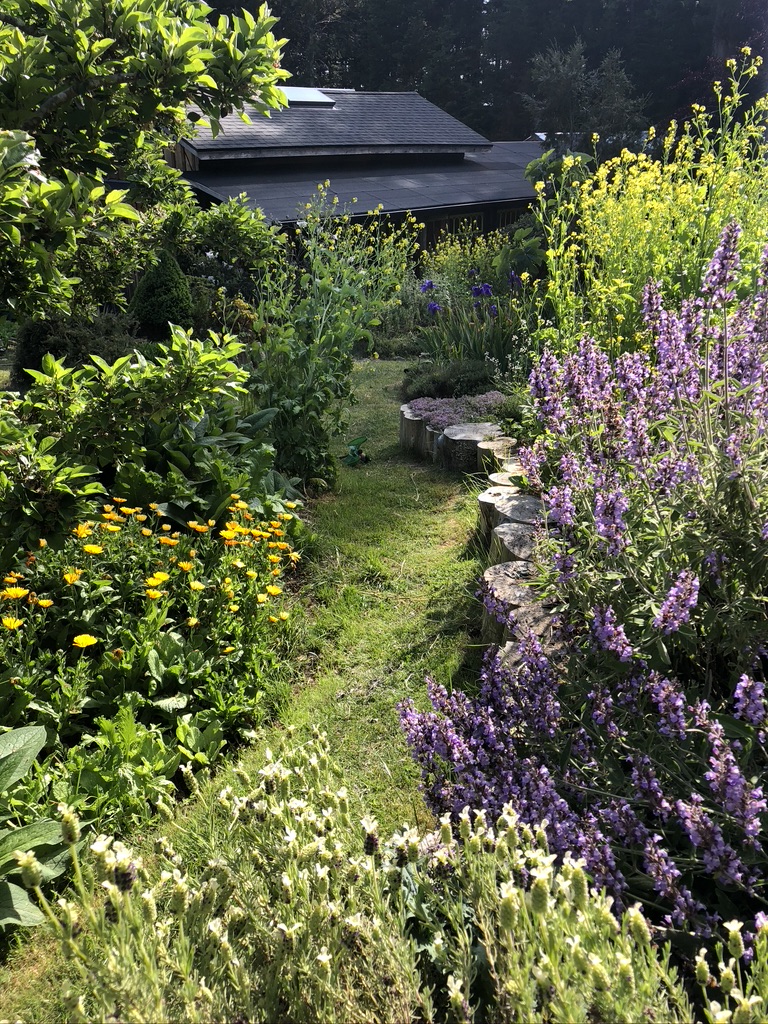
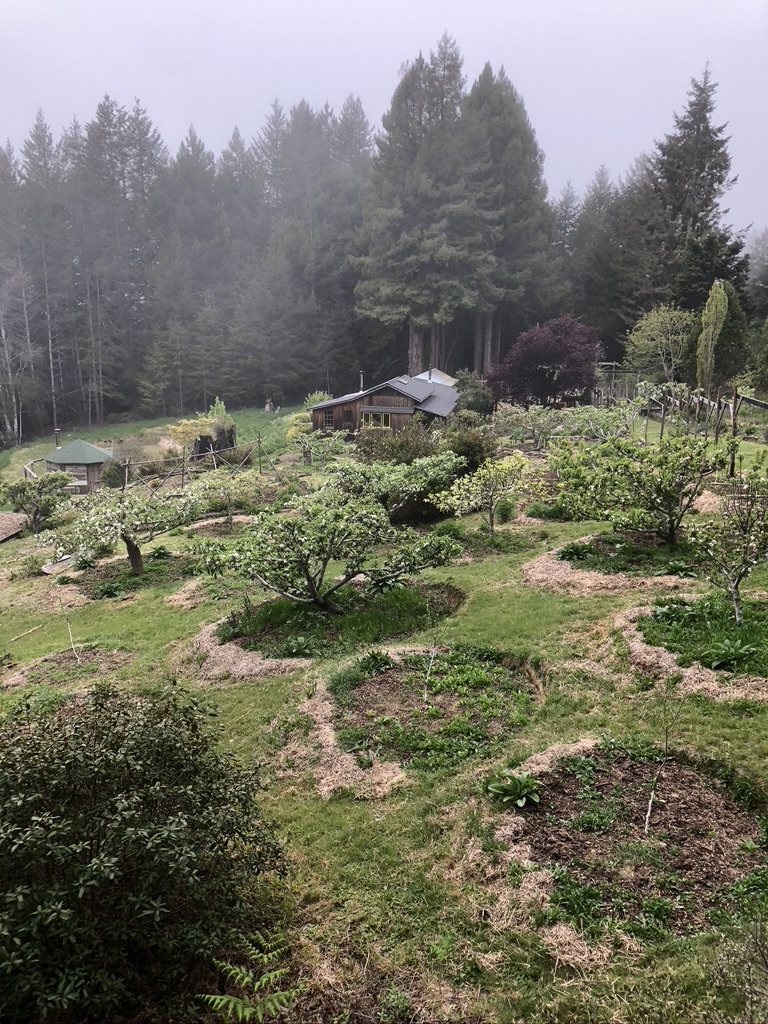
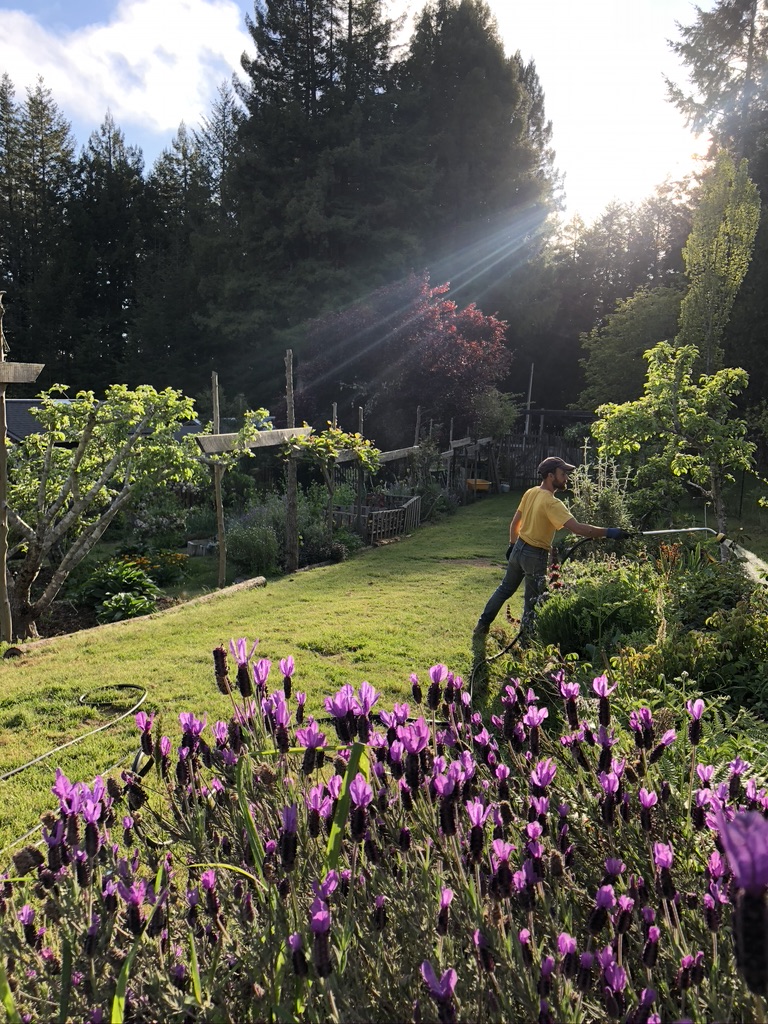
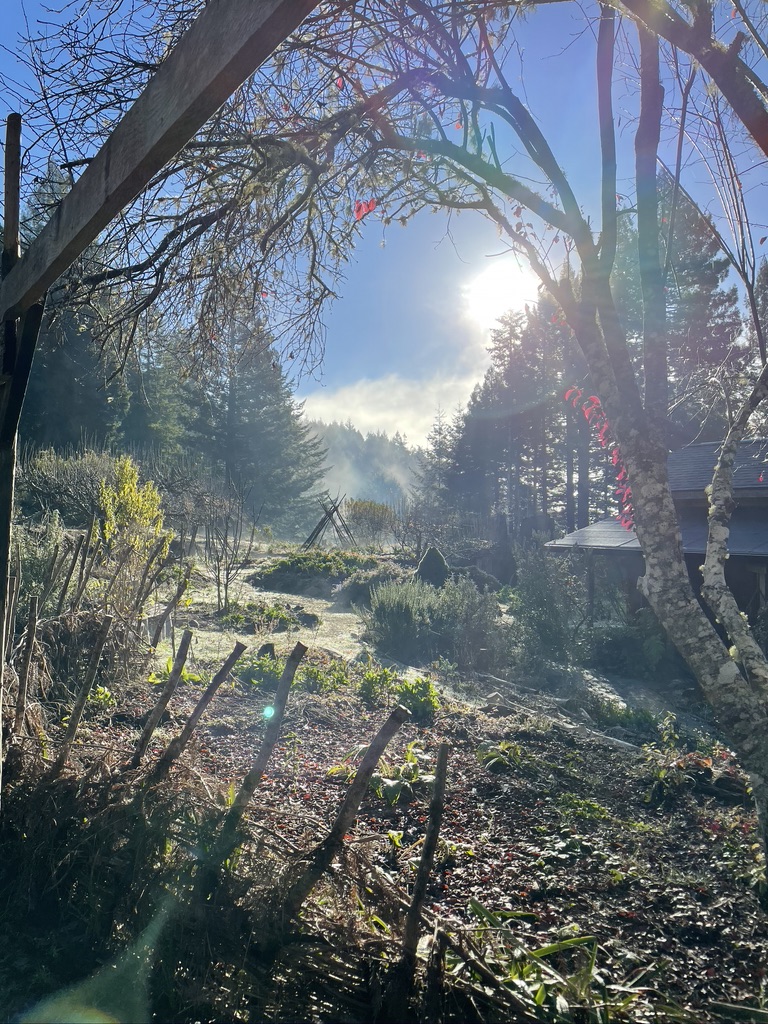
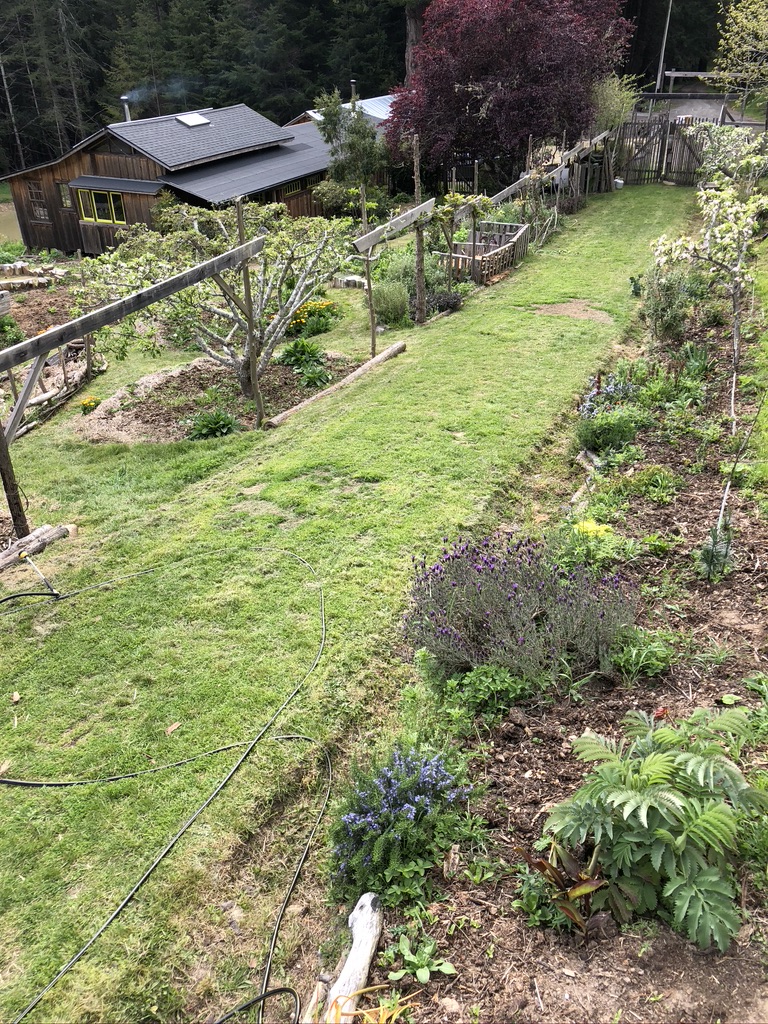
Mendocino Coast
We are in an enchanted part of the planet where dramatic coastlines meet ancient redwoods. Our community is comprised of a series of coastal villages every few miles strung out along highway 1: Elk, Gualala and The Sea Ranch to the south of us in Albion, and Little River, Mendocino, Caspar, Fort Bragg, and Westport to the north, before highway 1 heads inland, surrendering to the "Lost Coast." 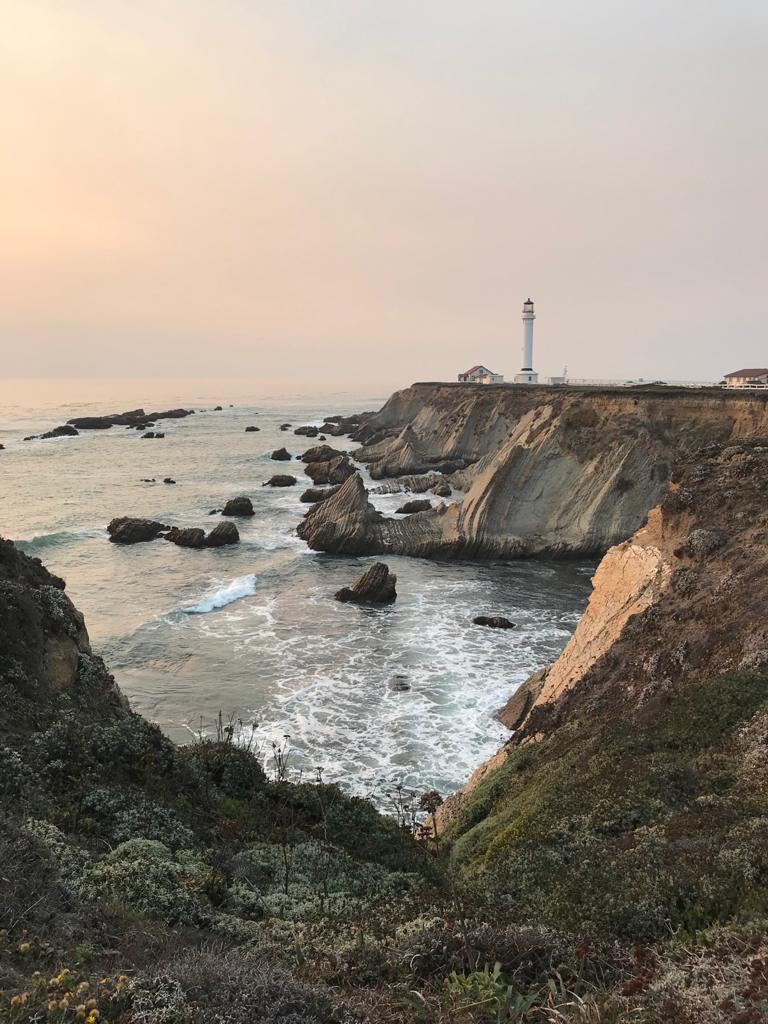
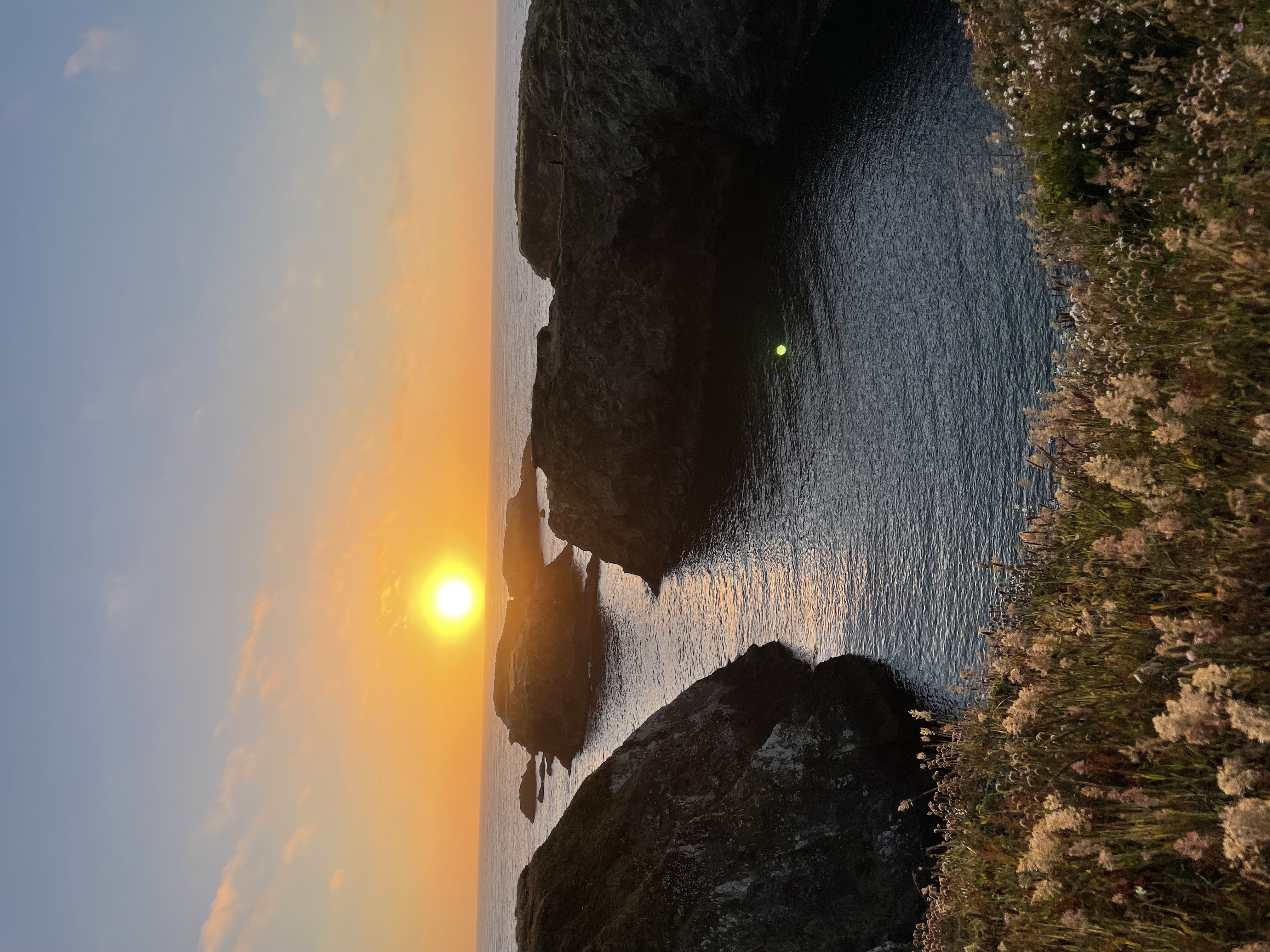
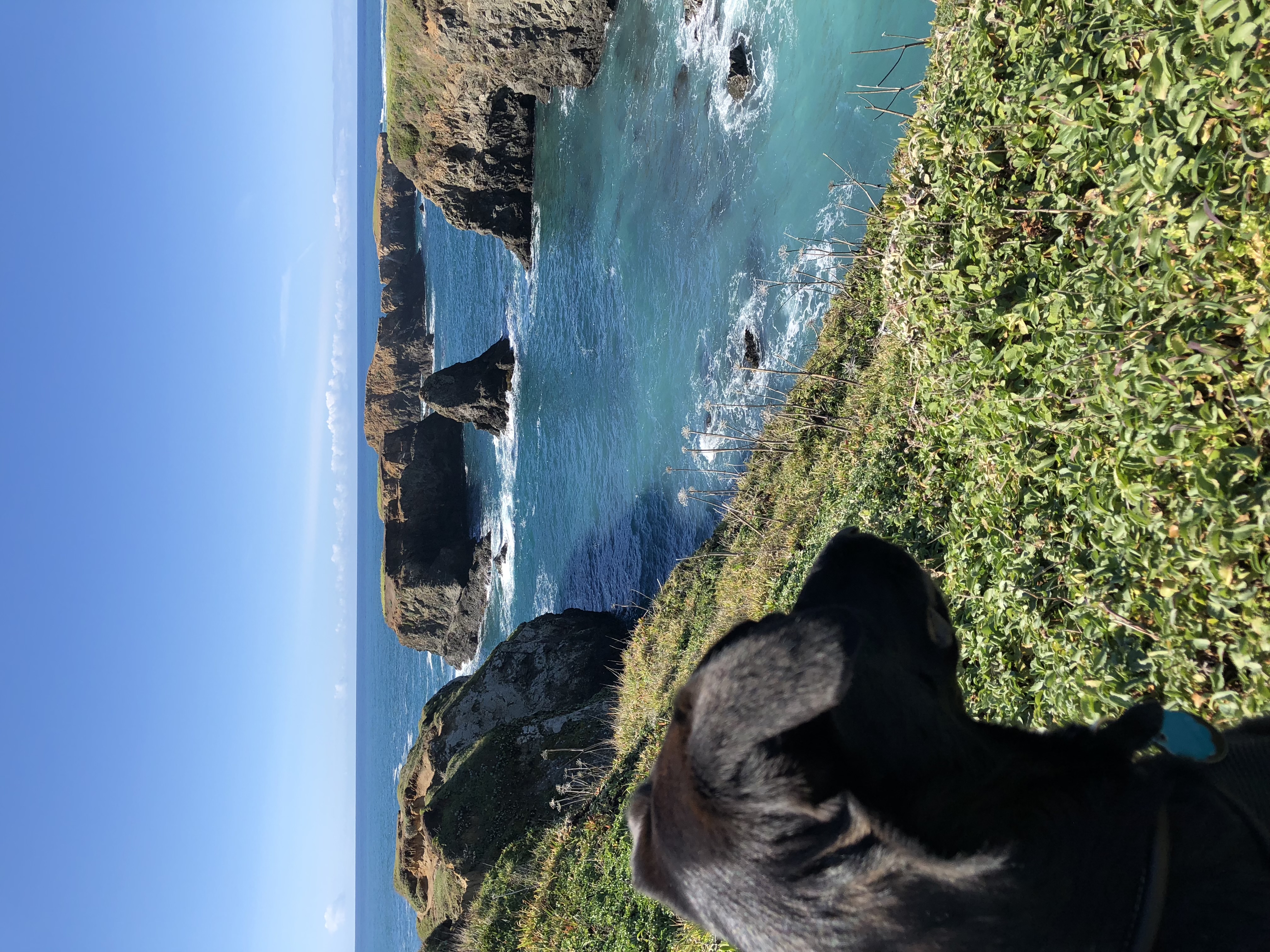
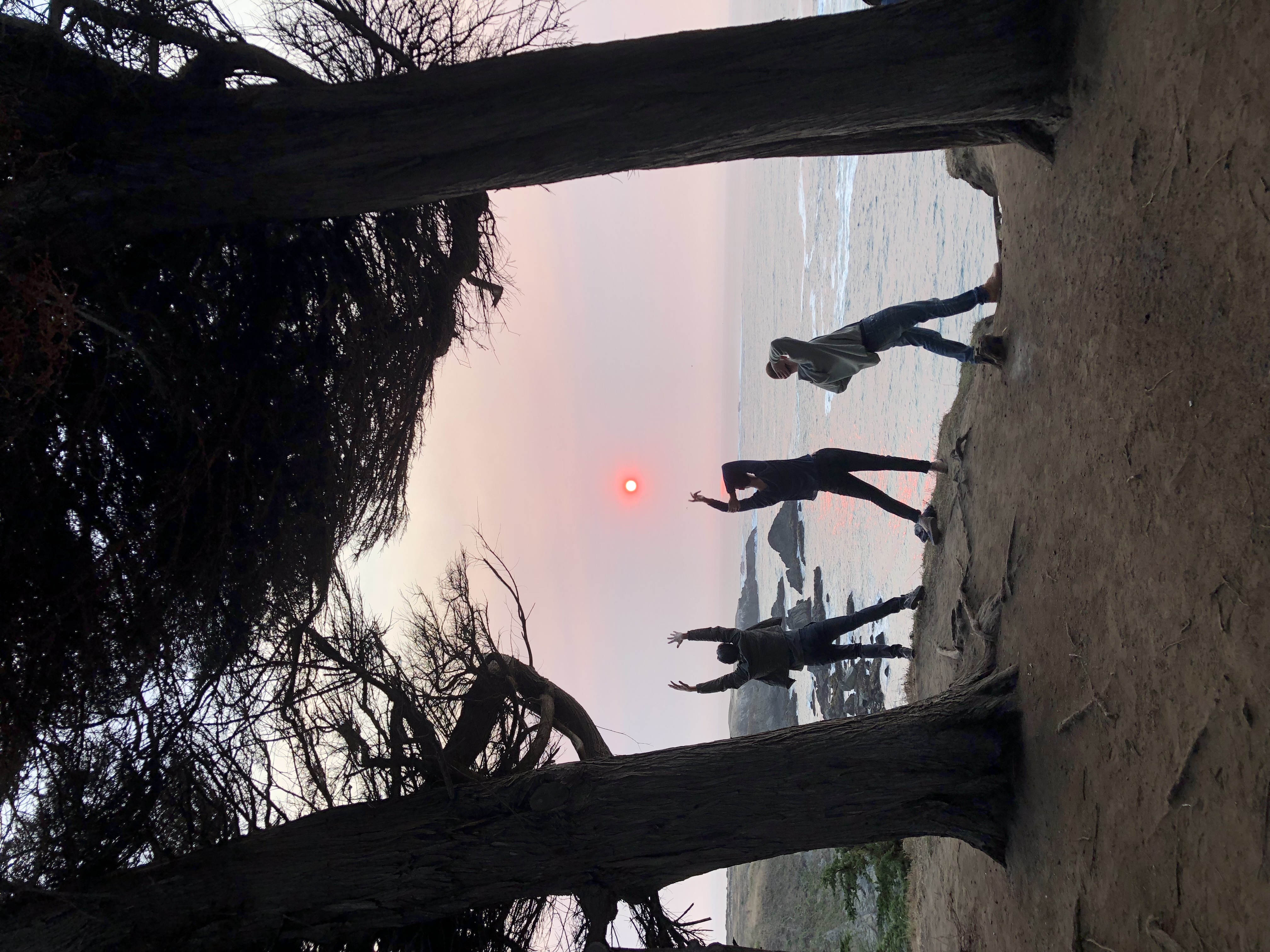
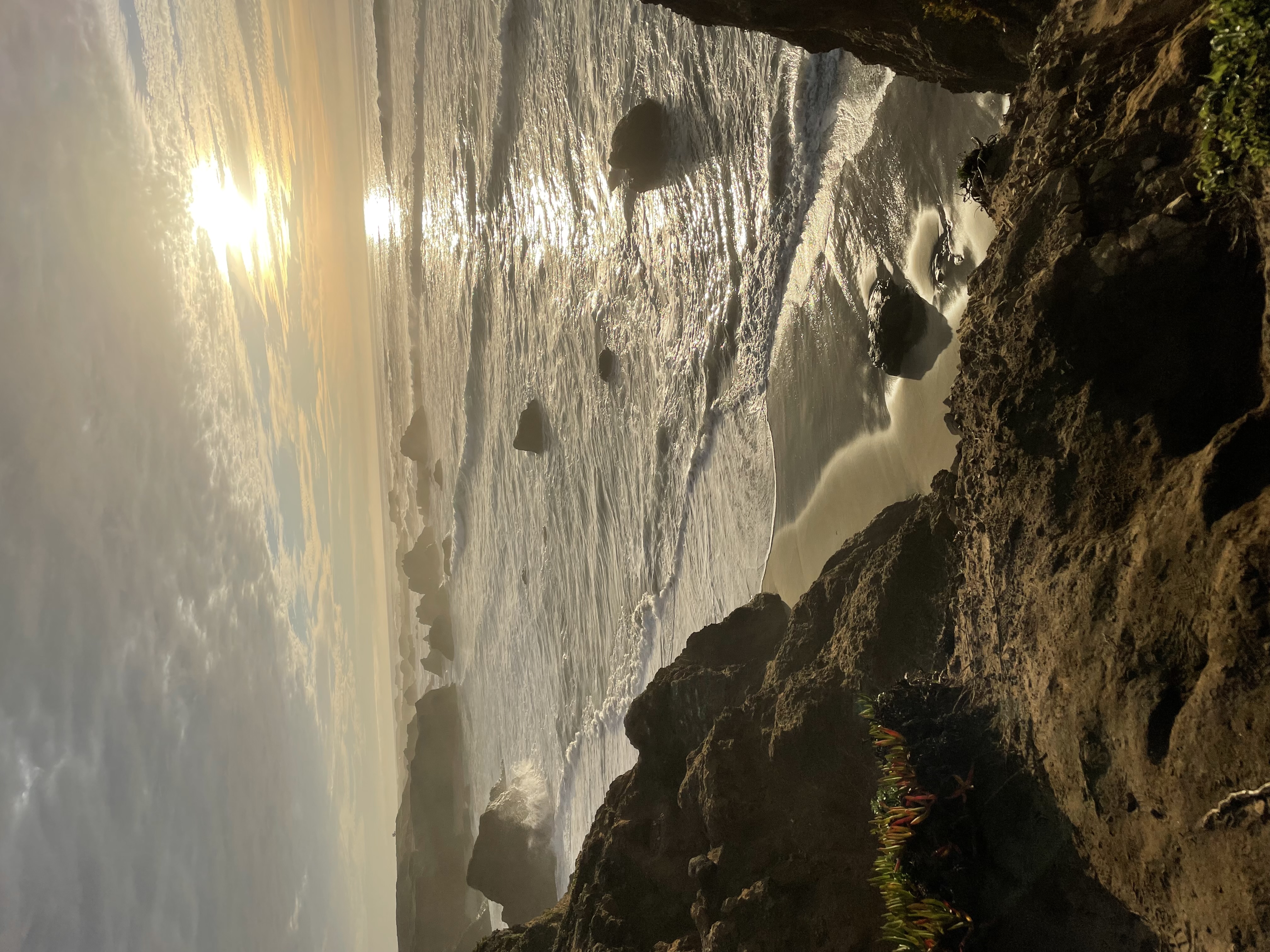
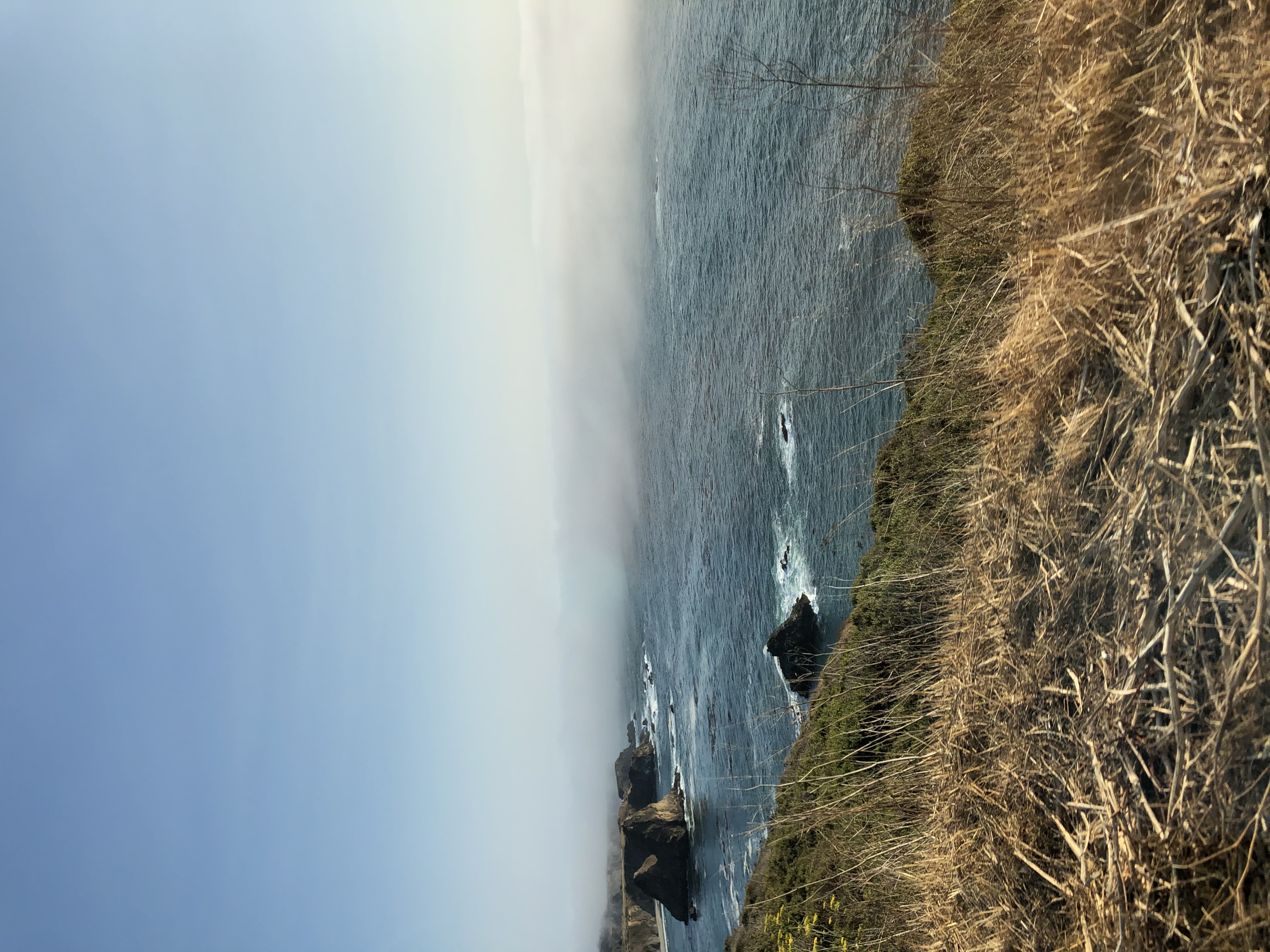

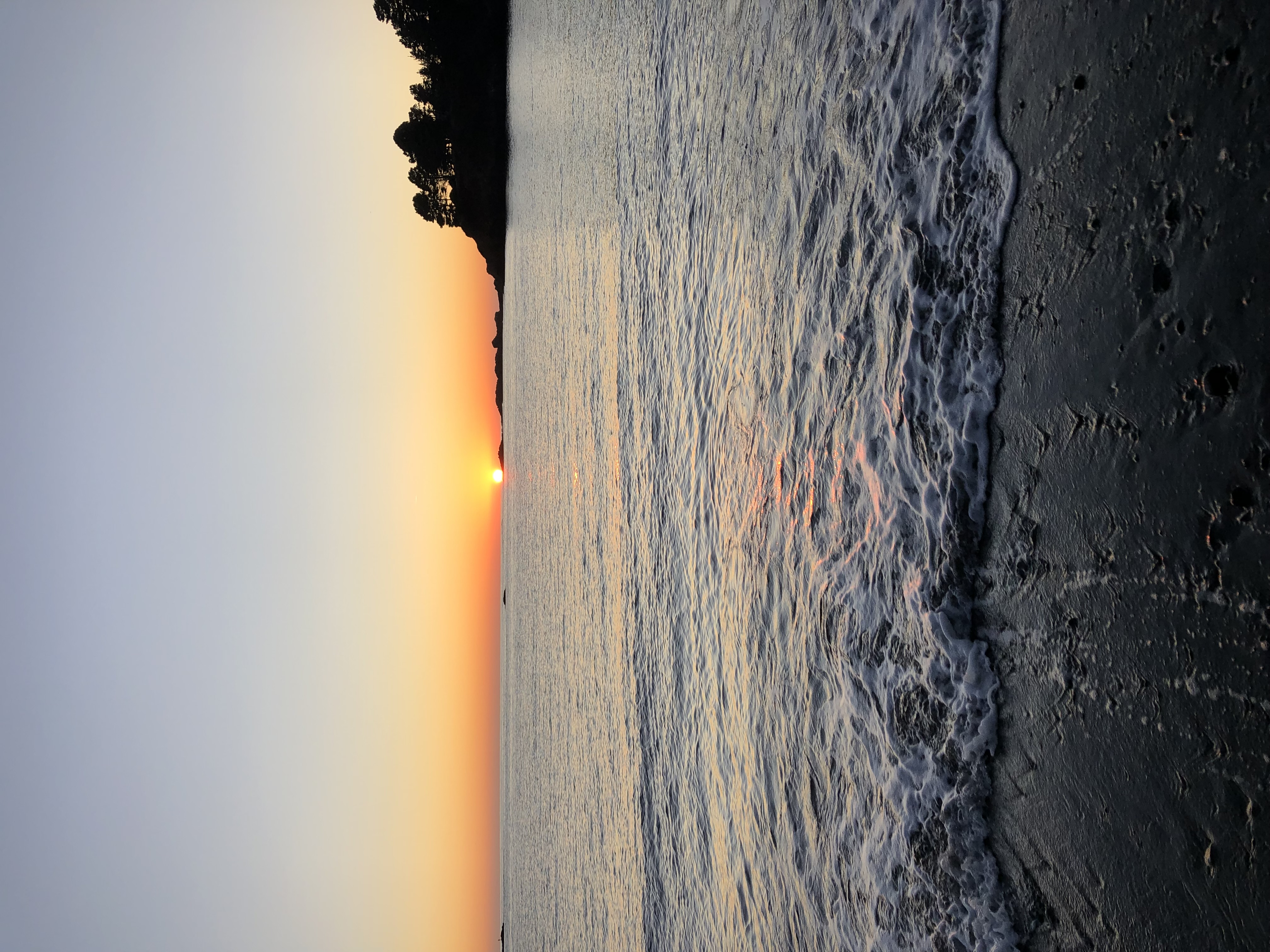

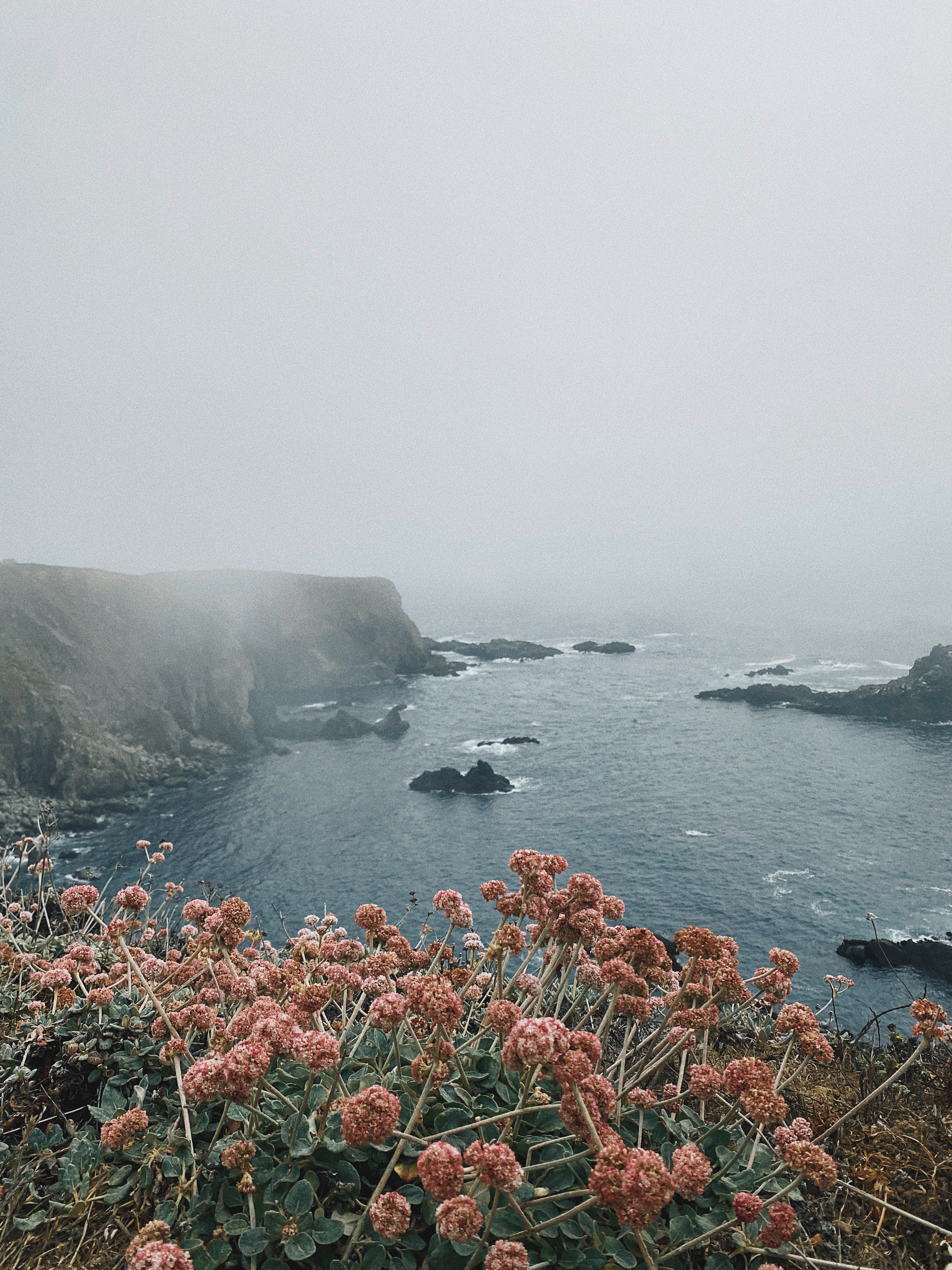
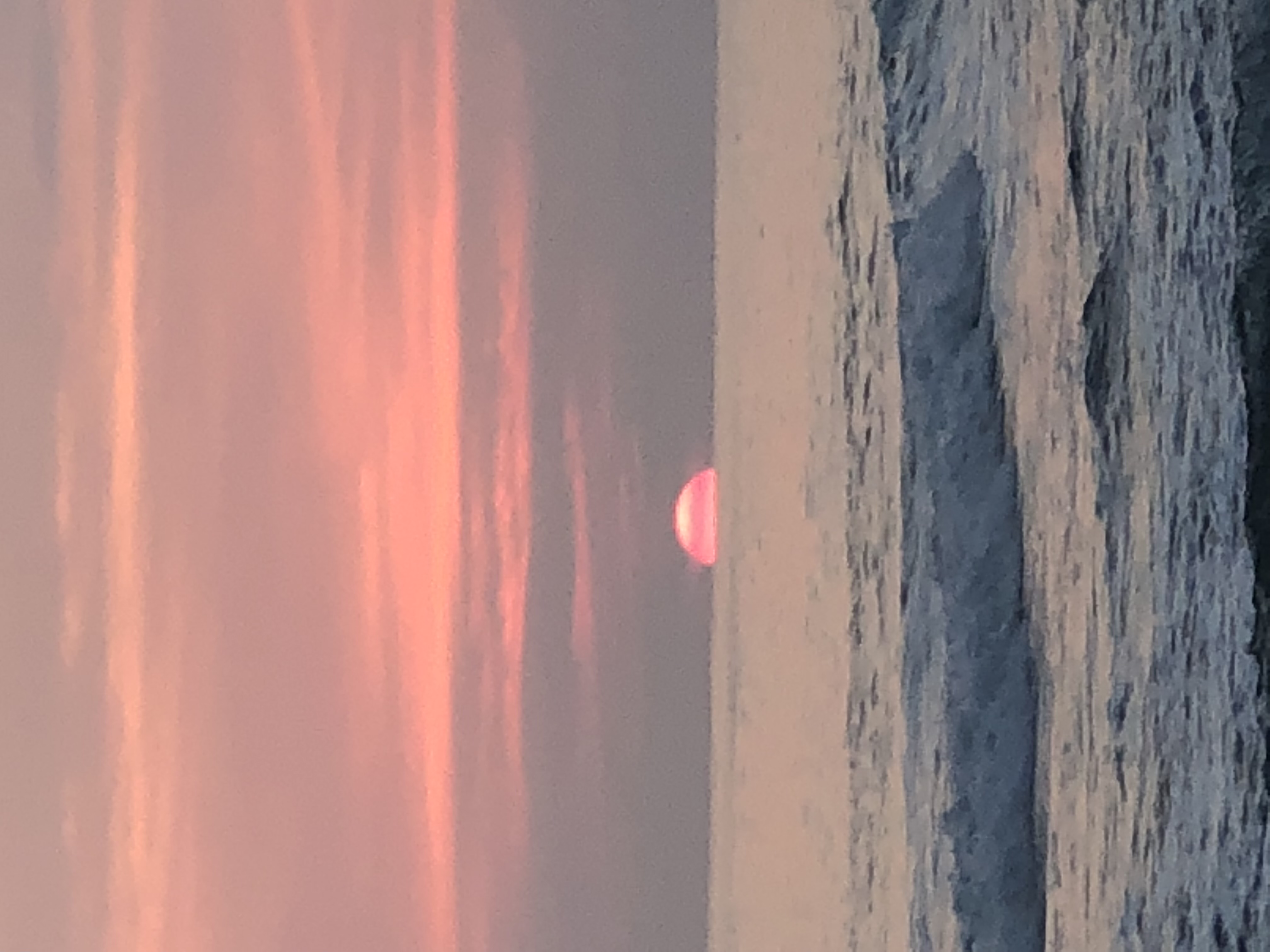
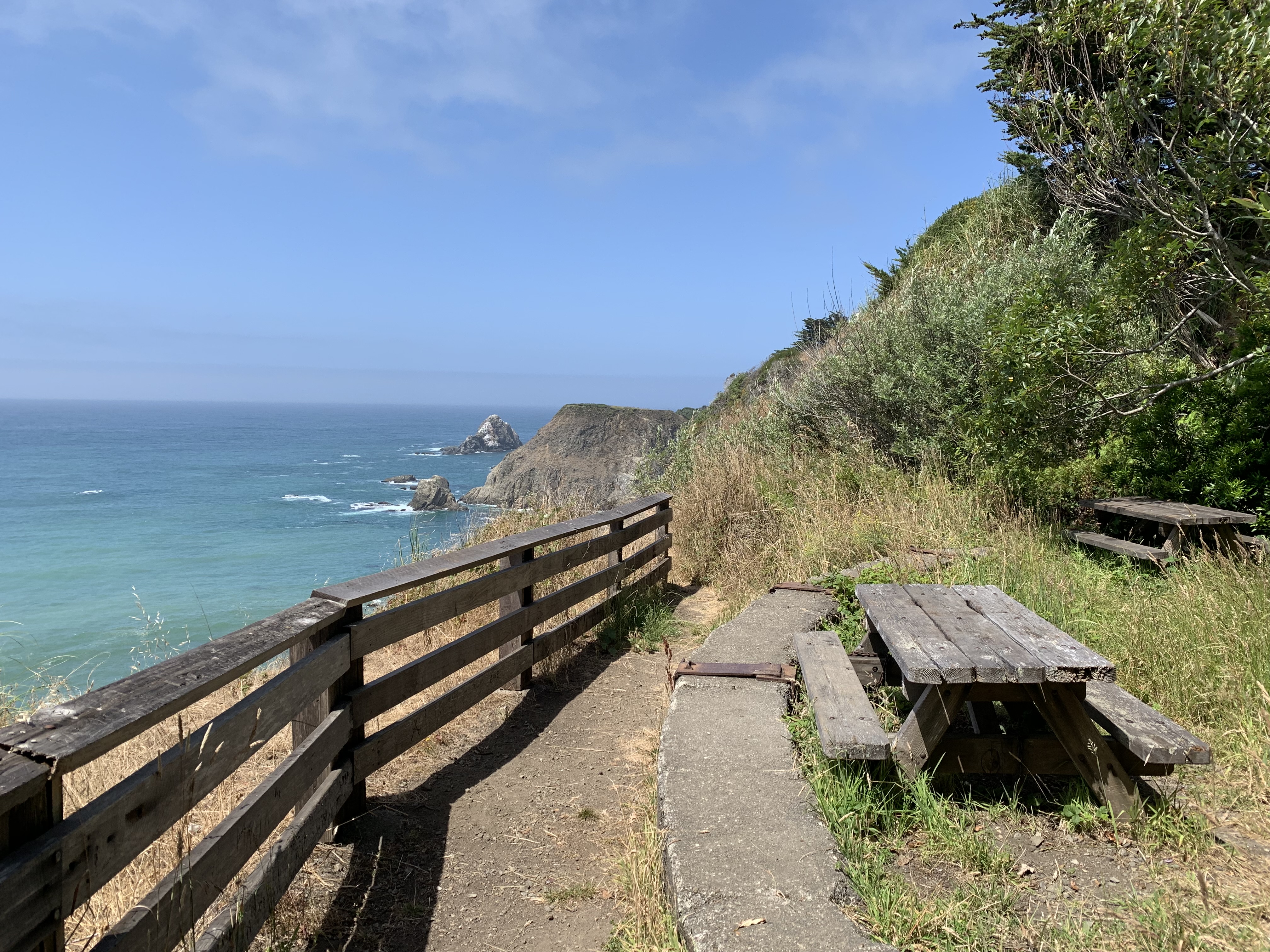
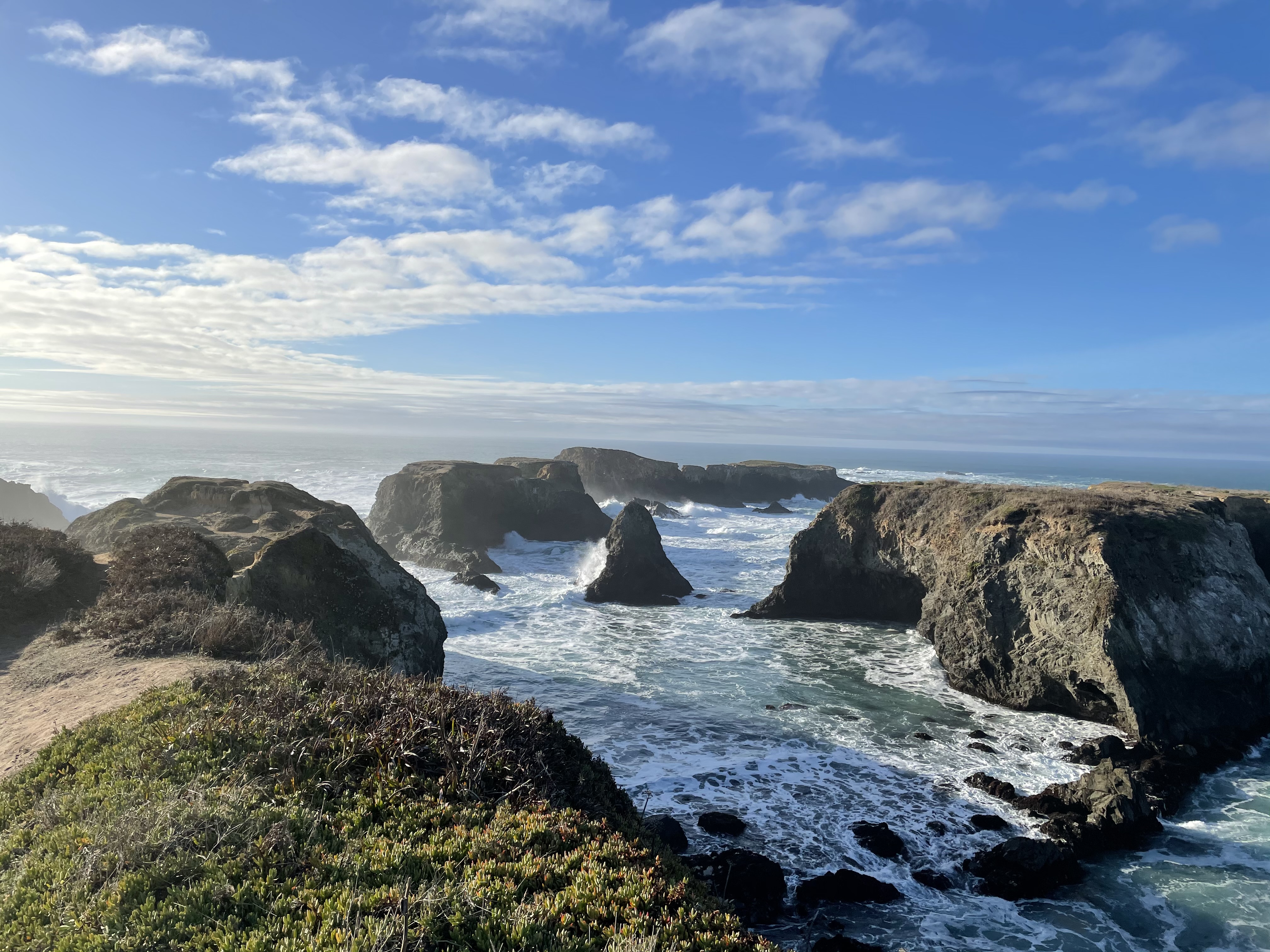
Here are a few of our favorite things in alphabetical order: Boont Berry Farm, Cafe Beaujolais, Cider Creek Collective, Corners of the Mouth, Elk Store, farmers markets (Fort Bragg and Mendocino), Fogeater Cafe, Fortunate Farm, Gallery Bookshop, Garden Seal Ranch, Good Bones, Greenwood State Beach, Hendy Woods State Park, Jug Handle Beach, Larry Spring Museum, Little Cup, Lost Coast Found, Navarro Beach, Maritime Cafe (Elk), MacKerricher State Park, Mendocino Art Center, Mendocino Headlands, Montgomery Woods, Orr Hot Springs, Pelican Bread, Queenie’s Roadhouse Cafe, Russian Gulch State Park, Russian River swim hole at Frog Lady Rock, Sneaker Wave, Solar Punk Farms, Sweetwater Spa, Ten Mile Beach, The Apple Farm, The Ark Thrift Store, Van Damme Beach, Wavelength Farm, Xa Kako Dile, and a few precious secrets we won't share here.
…a 1908 document lists numerous once-known Pomo village sites, including “kaba'tōda, on the top of the high, narrow ridge separating ‘Albion River’ from ‘Salmon Creek,’ and indefinitely located at a distance of one or two miles from the ocean.”
Contemporary communities nearby include: Pinoleville Pomo Nation, Hopland Band of Pomo Indians, Coyote Valley Band of Pomo Indians, Sherwood Valley Band of Pomo Indians, Redwood Valley Little River Band of Pomo Indians, Manchester-Point Arena Band of Pomo Indians, and Kashia Band of Pomo Indians.
…Kashaya Pomo women watch for the first warm inland winds of the summer as a sign that there will only be a few days to gather the seeds of wild oats.
Tending the Wild: Native American Knowledge and the Management of California’s Natural Resources (2005) by M Kat Anderson